The Daily Northwestern
Wednesday, May 7, 2025
16
Northwestern
Admitted student discuss what draws them to Northwestern
8 A&E
Dale Duro Latin Dance Company spreads love

Wednesday, May 7, 2025
16
Northwestern
Admitted student discuss what draws them to Northwestern
8 A&E
Dale Duro Latin Dance Company spreads love
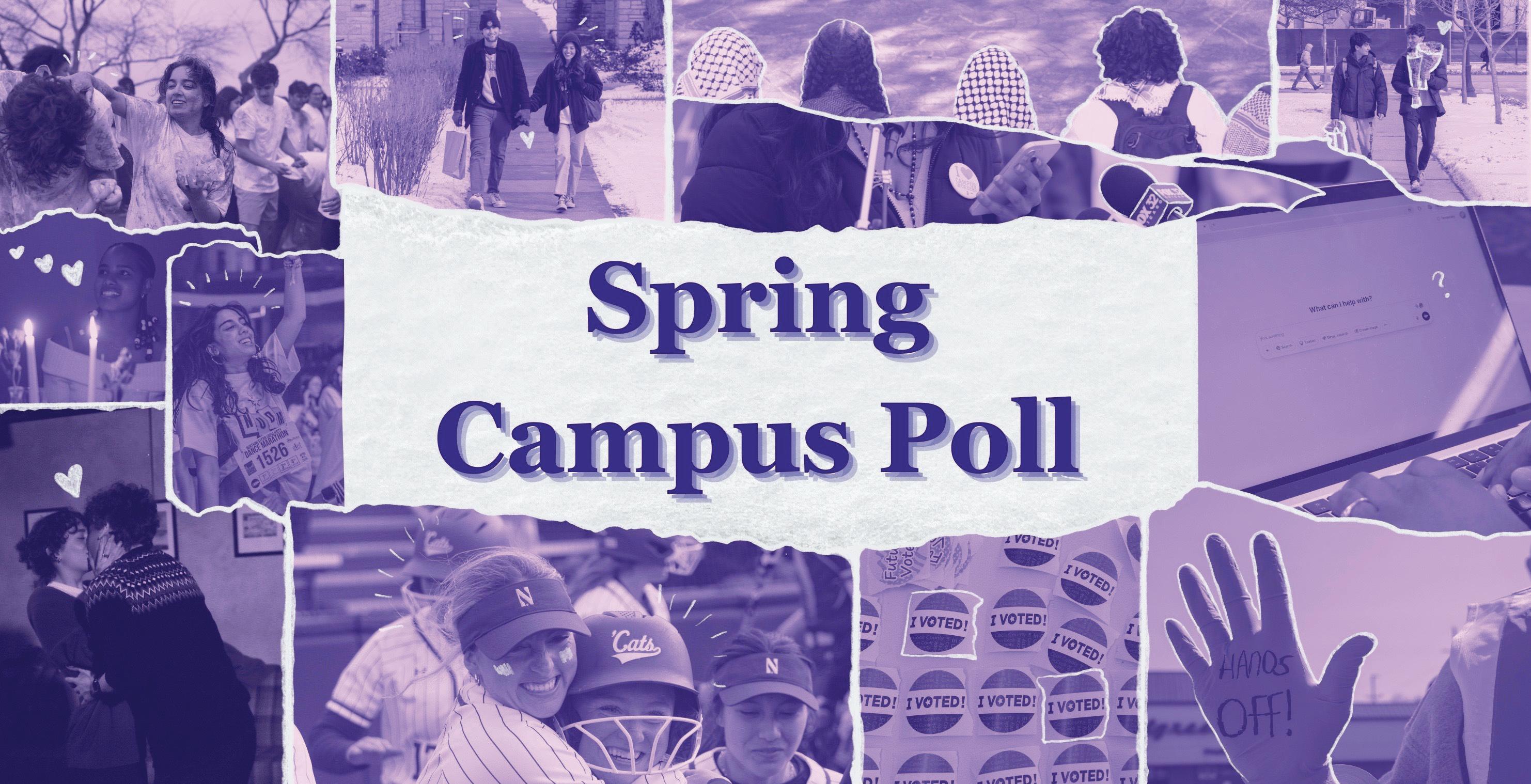

The Daily polled undergraduates on campus speech, romantic relationships, AI, politics and more
By SCOTT HWANG daily senior staffer
It’s quite the time to be a college student.
Campuses have been rocked with student protests over conicts in the Middle East for the last two years, fueling debates about free speech and antisemitism in higher education. From
the outside, the Trump administration has curtailed federal funding for university research and revoked the visas of some international students nationwide. e administration later
‘To be an organizer, to be a ghter, that will never end’
By AUDREY PACHUTA daily senior staffer @audreypachuta
U.S. Rep. Jan Schakowsky (D-Evanston), a stalwart of Illinois Democratic politics and a progressive voice on Capitol Hill since the late 1990s, announced Monday she will not seek a 15th term as representative for Illinois’ 9th
District, drawing the curtain on a congressional tenure that has spanned over a quarter century. The announcement came during her annual Ultimate Women’s Power Lunch, a Chicago fundraiser she has hosted since 2001.
“To be an organizer, to be a ghter, that will never end,” Schakowsky said. “But I have made the decision that I am not going to seek reelection.”
In front of a packed ballroom at the Sheraton Grand Chicago Riverwalk, Schakowsky said that while her congressional career would soon come to an end, she would continue to “be a badass.”
Her decision follows weeks of speculation about her political future, sparked in part by U.S. Sen. Dick Durbin’s (D-Ill.)
» See SCHAKOWSKY, page 11
restored legal status for many international students.
Amid that turmoil, the accelerating development of generative AI has transformed the way many students study, write, work
and more. Meanwhile, other parts of the student experience — mental health, friendship and love — remain as relevant as ever.
In e Daily’s Spring 2025
poll, conducted from April 20 to April 26, we asked Northwestern students about all of that and more. Here’s what we found.
» See CAMPUS POLL , pages 4-5
By ISAIAH STEINBERG daily senior staffer @isaiahstei27
Eighteen Northwestern students traveled to Washington on Monday and Tuesday to meet with lawmakers and a end a press conference on antisemitism on college campuses. e trip was organized by the Coalition Against Antisemitism
at Northwestern — an advocacy and lobbying group of thousands of Jewish students, faculty, parents and other NU community members — in order to expose alleged antisemitism on campus.
“Antisemitism on campus is something I’ve experienced and something I feel passionately about,” Weinberg freshman Max Schlanger said. “When I was given the opportunity, I
thought it would be a great way to share my voice and speak from my own experience, but also to advocate for something I believe in.”
Students met directly with several prominent lawmakers, including Reps. Elise Stefanik (R-N.Y.), Darin LaHood (R-Ill.), Nicole Malliotakis (R-N.Y.) and Kevin Kiley
» See CAAN, page 11


By SOPHIE BAKER and AUDREY PACHUTA
If every public official dreams of leaving a lasting legacy on their constituency, Mayor Daniel Biss is making the case for Envision Evanston 2045 to become his.
Introduced nearly 15 months ago, the sweeping 20-year roadmap for the city’s future has become all but synonymous with Biss himself — his political brainchild: bold in scope and stubborn in progress.
Initially framed as a local means of addressing a national affordable housing crisis, the plan also aims to reimagine transportation, overhaul infrastructure and deliver a host of other reforms. But that vision has encountered a bumpy road. Critics and contentious language have all slowed its journey.
In January, City Council split the comprehensive plan from the associated rezoning overhaul.
Following a redraft in February, the comprehensive plan lingers in the Land Use Commission, where debate over wording has stalled formal recommendations.
New councilmembers weigh in
As Biss began his second term, three new faces entered a new council sworn in on April 28. The new councilmembers hold similar views on the comprehensive plan and aim to maximize community input moving forward.
Both Ald. Shawn Iles (3rd) and Ald. Matt Rodgers (8th) criticized the plan’s initial timeline. Iles said that discussions around the “aggressive” nature of the first Envision Evanston draft dominated his campaign trail.
“As somebody who is in favor of plenty of aspects of it, I found myself defending something that I wasn’t a part of creating,” Iles said.
Still, these councilmembers supported the decision to decouple the comprehensive plan from the rezoning proposals. Ald. Parielle Davis (7th) described this move as “perfect” in an email to The Daily. Rodgers said he wanted to stop using the term “Envision Evanston” to recognize that the two measures have been separated. They also viewed the second draft as more aptly incorporating community feedback.
Much of this feedback centered on how the original
plan addressed housing. Some proponents of increasing housing density have said that doing so would make the city more affordable.
Rodgers proposed adding density above commercial buildings. He said this would grow the housing market and the customer base for businesses.
“There are various areas in the city of Evanston that can see increased density, and it makes sense to have increased density,” Rodgers said.
Iles emphasized that he was not in favor of blanket up-zoning, and instead wanted to diversify the housing stock in Evanston. He also said four-flat zoning would not
“move the needle” on affordable housing.
“There’s a lot of naturally occurring affordable housing in the 3rd Ward, and I want to do my best to protect that,” Iles said.
Both Rodgers and Iles highlighted the necessity for community involvement in the ongoing decision making process. Rodgers suggested that the city host town halls to hear and respond to concerns about the document in more detail.
“Ultimately, the comprehensive general plan and the zoning ordinance that results from that is not going to be my vision or the vision of nine councilmembers,” Rodgers said. “It’s everybody in the community.”
State legislature poses potential challenges
But Biss and the new aldermen aren’t the only ones looking to alter the zoning code in Evanston.
In Springfield, members of the Illinois General Assembly have proposed legislation that could impact the way Envision Evanston and related zoning legislation is implemented.
Specifically, the Missing Middle Housing Act and Affordable Communities Act could complicate Evanston’s future zoning codes.
The Missing Middle Housing Act provides that all cities with a population greater than 25,000 allow the development of all “middle housing” types on plots larger than 5,000 square feet and the Affordable Communities Act includes language to regulate against preventing these developments.
In contrast to the aspirational phrasing of the comprehensive plan, these zoning bills would set strict implementation deadlines for select zoning changes in 2026.

While they echo some of the changes more broadly defined in Envision Evanston, the state’s call for direct action conflicts with the city’s desire to slow the process and make space for further dialogue with constituents.
University of Illinois urban and regional planning Prof. Rolf Pendall said that despite the stricter language of the state bills, Illinois uniquely lacks the infrastructure to ensure swift implementation.
Pendall said the Illinois Housing Development Authority and Department of Commerce and Economic Opportunity do not have the same implementation power as similar bodies in other states when enacting zoning measures.
Still, he said that if passed, the state legislation could prompt pivotal changes in Evanston.
“It shifts the politics at the local level,” Pendall said. “If there are local folks who want this kind of zoning reform, they (would) have something in the narrative that says, from the state level, this is required.”
In each of these two housing bills, home rule authority — the power to act independently of the state legislature — is also specifically negated.
Yet, much like Envision Evanston’s early sputterings, the changes proposed in the bills are not definite. Both
pieces of legislation remain in the rules committee, but their sponsors are adamant about the necessity of the measures.
“Most municipalities would say: ‘We are elected to make the decisions that we feel are best for our community, and you should leave us to do that,’” said State Rep. Michelle Mussman (D-Schaumburg), one of two representatives to introduce House Bill 3288. “But if these municipalities are not self-selecting to modify their zoning laws and create opportunities for this other kind of development, then what?”
Biss told The Daily he thought it was “great” that the state was addressing the affordability crisis and that he welcomes zoning reform engagement at “all levels of government.”
While Biss understands the state’s capacity to evade home rule authority, he’s still hopeful for Envision Evanston to make an impact.
“We are a municipal government,” Biss said. “We have the ability to control our own destinies in terms of our land use policies, and I take that very seriously.”
a.pachuta@dailynorthwestern.com
s.baker@dailynorthwestern.com











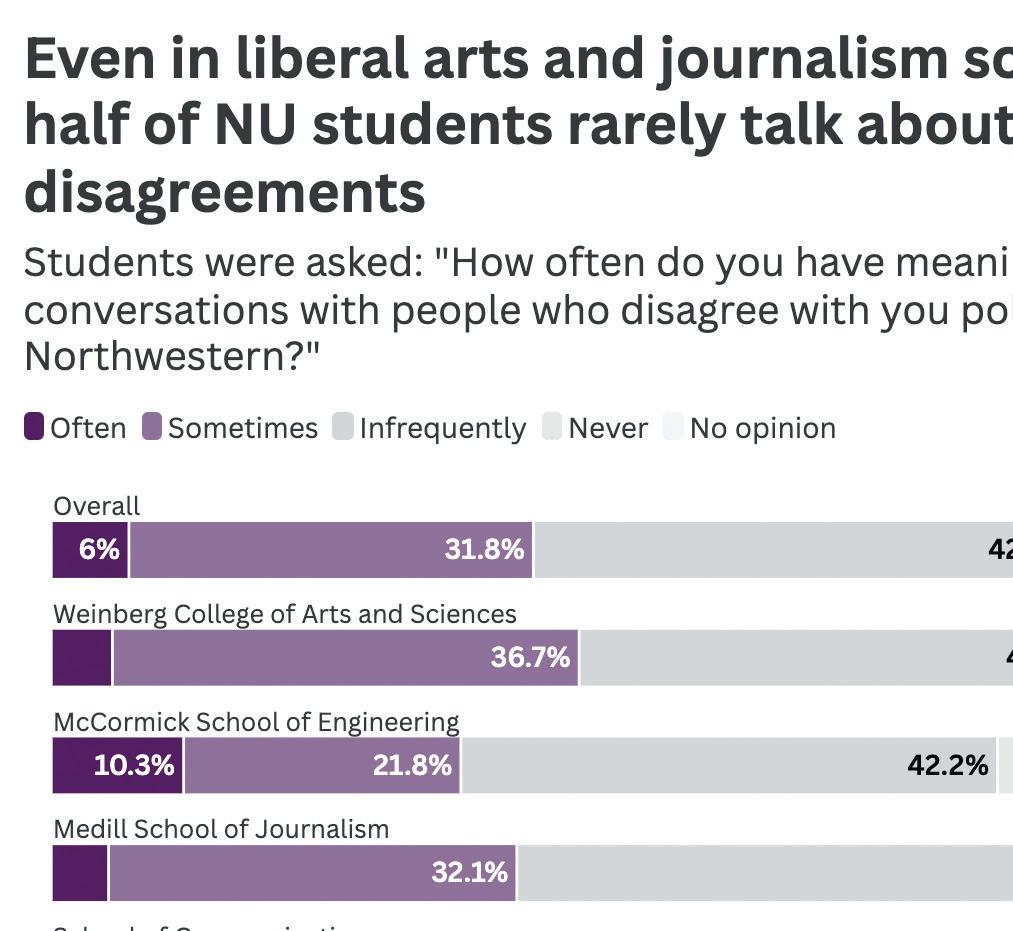

From page 1
In the last few years, there has been a growing national discussion about what kinds of speech and ideas should be allowed on college campuses. e conversation comes amid the resurgence of a broader, long-running debate about whether colleges today lean too far le and shut out conservative viewpoints. In addition, NU is now facing federal scrutiny over what some lawmakers say is a failure to address antisemitism on campus since April 2024’s pro-Palestinian encampment.
Students rarely have conversations with people who disagree with them politically e University has emphasized its commitment to bringing together students and faculty with diverse backgrounds. “It is only through engagement across di erence that we can obtain the full transformative bene t of a great residential university,” Schill wrote to members of the NU community in a March 6 email. According to the poll data, approximately two in ve students re ect that sentiment with their actions. When asked, 37.8% of students said they o en or sometimes have meaningful conversations with people who disagree with them politically at NU. In

contrast, 58.7% said they infrequently or never do.
Even in Weinberg College of Arts and Sciences, NU’s liberal arts college, and Medill School of Journalism, students were more than twice as likely to say they never have conversations about political disagreements than to say they o en do.
Most students (64.7%) said they feel comfortable expressing their political views on campus or in their classes. But among NU’s relatively small set of students identifying as politically moderate or conservative, only 25.0% agreed. A majority of moderates and conservatives said they felt somewhat or very uncomfortable expressing their views (58.8%).
Likewise, 30.3% of all students — and 57.6% of moderates and conservatives — said they have felt pressure to align with the dominant political views on campus.
Just 12.9% of students identi ed as moderate in the poll, and 4.7% identi ed as somewhat or very conservative. In contrast, approximately 40% of NU students identify as very liberal and another 40% as somewhat liberal.
e student body is thus predominantly liberalleaning — and students know it. Even 42.7% of somewhat liberal students say NU’s political culture lies to the le of their own — as do 89.4% of moderates and conservatives.
Student views on campus antisemitism and
Mental well-being generally high — no thanks to current events
Amidst the above debates and events on campus, one might be reassured to learn that NU students are doing alright.
e poll included questions about students’ mental health and social lives. e vast majority of students (71.6%) described their current mental and emotional well-being as excellent or good, with only 5.6% describing it as poor.
We have data on how di erent aspects of life are contributing to students’ mental health. e vast majority of students (74.0%) said that interpersonal relationships were positively impacting their mental health. Extracurriculars (60.4%) and physical health (42.8%) were also positive factors for students.
And the bad news. Students were more likely to say that current events, academics and career factors were hurting their mental health than helping it.
An overwhelming majority of students felt that current events were negatively impacting their mental health at 74.6% — compared to only 2.4% who said the e ect was positive. Similarly, but to a lesser degree, 50.9% said academics were negatively impacting their mental health and 20.8% said it was a positive factor.
Across schools, McCormick (54.3%) and Weinberg (52.3%) students were most likely to say that academics are negatively a ecting their mental health. Perhaps relatedly, Medill and Communication students were most likely to say their career outlook was hurting their mental health, both at 53.1%. Interestingly, students in romantic relationships were only slightly more likely to rate their


Islamophobia di er by religion and political identity
Universities like NU have come under scrutiny from the federal government and the public for perceived campus antisemitism, in light of proPalestinian campus protests that have occurred in the last two years since the outbreak of the Israel-Hamas war. NU is also currently undergoing several federal investigations relating to antisemitism.
e majority of Jewish students identify antisemitism as a somewhat or very serious problem at NU (63.1%), joined by 30.4% of the whole student body. A smaller number of Jewish students say it is not much of a problem or not a problem (36.9%), along with a slight majority of the whole student body (56.7%).
ree- hs of Jewish students say they or someone they know have experienced antisemitic behavior on campus (58.0%), along with 19.5% of the student body.
Just under half of all students say Islamophobia is a somewhat or very serious problem on campus at 47.2%, with 36.5% saying it is not much of a problem or not a problem. One- h of the student body says they or someone they know have experienced Islamophobic behavior on campus (20.6%). e sample size of Muslim students who responded to the poll was too small to report separate data.
Whether a student viewed antisemitism as a
problem on campus had a lot to do with their political beliefs. Students who identi ed as very liberal only identi ed antisemitism as a very serious problem at Northwestern 3.5% of the time, while students who identi ed as moderate or conservative did so 13.4% of the time.
On the other hand, very liberal students identi ed Islamophobia as a somewhat or very serious problem a combined 63.3% of the time, compared to moderate and conservative students who did so a combined 26.3% of the time.
It isn’t true that politically moderate and conservative students are signi cantly more likely to be Jewish. e student body as a whole is approximately 12.1% Jewish, according to our poll data, while 15.2% of moderates and conservatives are Jewish — not signi cantly di erent.
Conversely, Jewish students are actually more likely than any other religiously-identifying student group to identify as very liberal at 41.4%. For comparison, 27.4% of Protestant students and 24.6% of Catholic students identi ed as very liberal. Atheist and agnostic students were the most likely to identify as very liberal.
Political di erences around perceptions of antisemitism and Islamophobia may partly stem from di erent interpretations of the terms. e Daily chose not to o er a de nition of either term in the poll, in order to not in uence respondents in one direction or another.
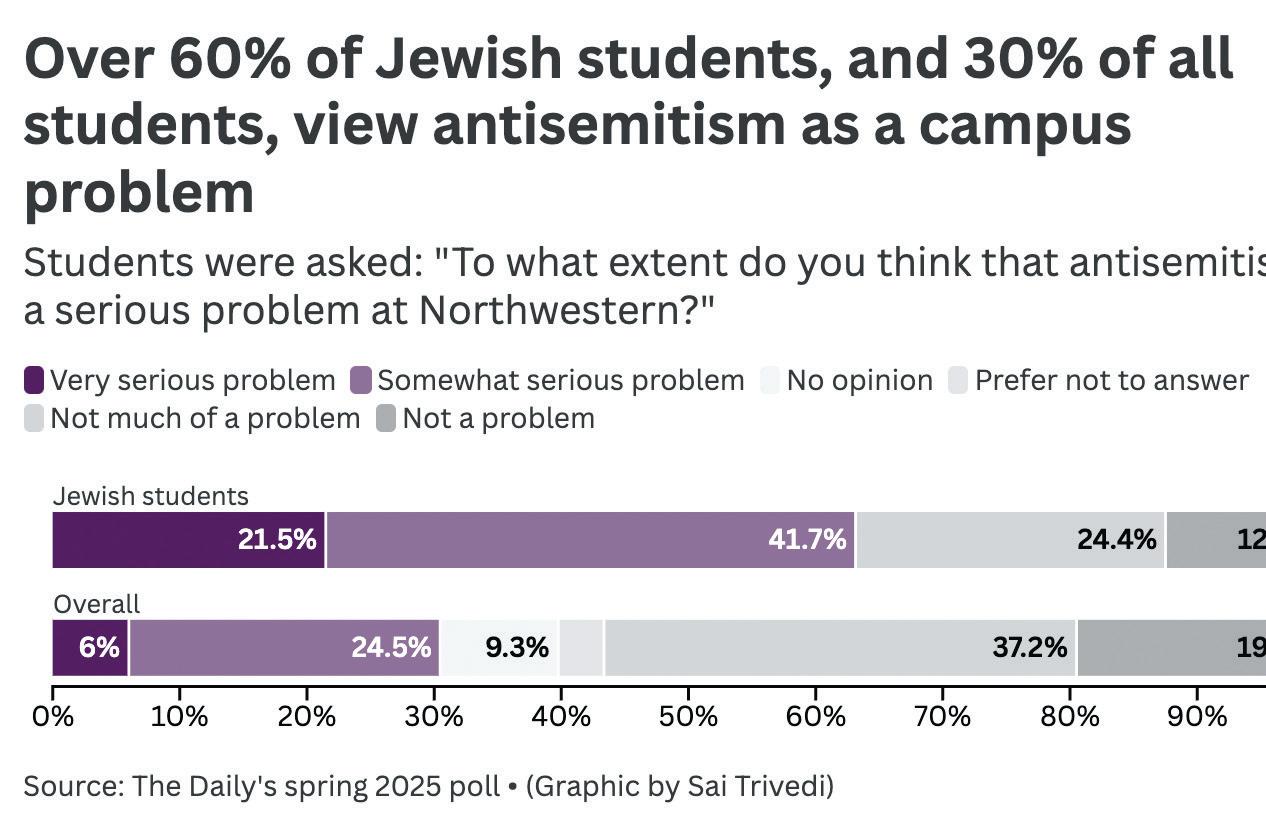

well-being as excellent or good (75.0%) than single students (69.0%).
One in four students a end therapy (24.0%) and an additional 30.9% have a ended therapy in the past.
Here, there are notable gender di erences.
Only 19.0% of men a end therapy currently, with another 26.6% having a ended in the past. For women, those numbers are 26.4% and 35.1% — meaning women are generally more likely to a end therapy, according to our poll numbers.
Students feel closer to college friends over home friends a er more years at NU
Most students say they’re satis ed with their social life at NU (78.9%). is fact is relatively


consistent across gender, race and school. When asked whether they feel closer to friends from college or from home, 48.9% of students said they feel closer to friends in college and 20.3% said friends from home.
As the years pass, it seems like student connections grow stronger. 63% of seniors reported that they feel closer with their college friends than their friends at home, up from 55.6% of juniors, 43% of sophomores and 31% of freshmen. Unfortunately, as some relationships develop, others have faded. Only 12% of seniors said that they feel closer with their hometown friends. e freshmen and sophomores are holding on more closely, with 37.8% and 34.4% saying they’re equally close with home and college friends respectively.
ChatGPT was publicly released in November 2022, when members of the current junior class were studying for their rst nal exams as college students. Since then, generative AI platforms have become a regular feature of many students’ lives.
Students using AI much more than in the fall
Indeed, 69.2% of students say they use generative AI at least once per week, with 27.4% saying they use it every day. at’s up signi cantly from the 38.8% of students who said they use it weekly in e Daily’s Fall poll — from this same academic year.
Students studying math-related subjects — including computer science and statistics — are the most likely to use AI daily (38%), followed by those in engineering (33%) and the social sciences (30%). Across schools, McCormick students use AI most frequently.
What are students using it for? All sorts of things.
Every part of the writing process can now involve generative AI. One- h of students (20.7%) say they have used AI to write assignments, while almost half have used it to edit (47.9%) and generate ideas and nd sources (45.9%).
AI can help students summarize course readings (49.6%), do class problems like math questions
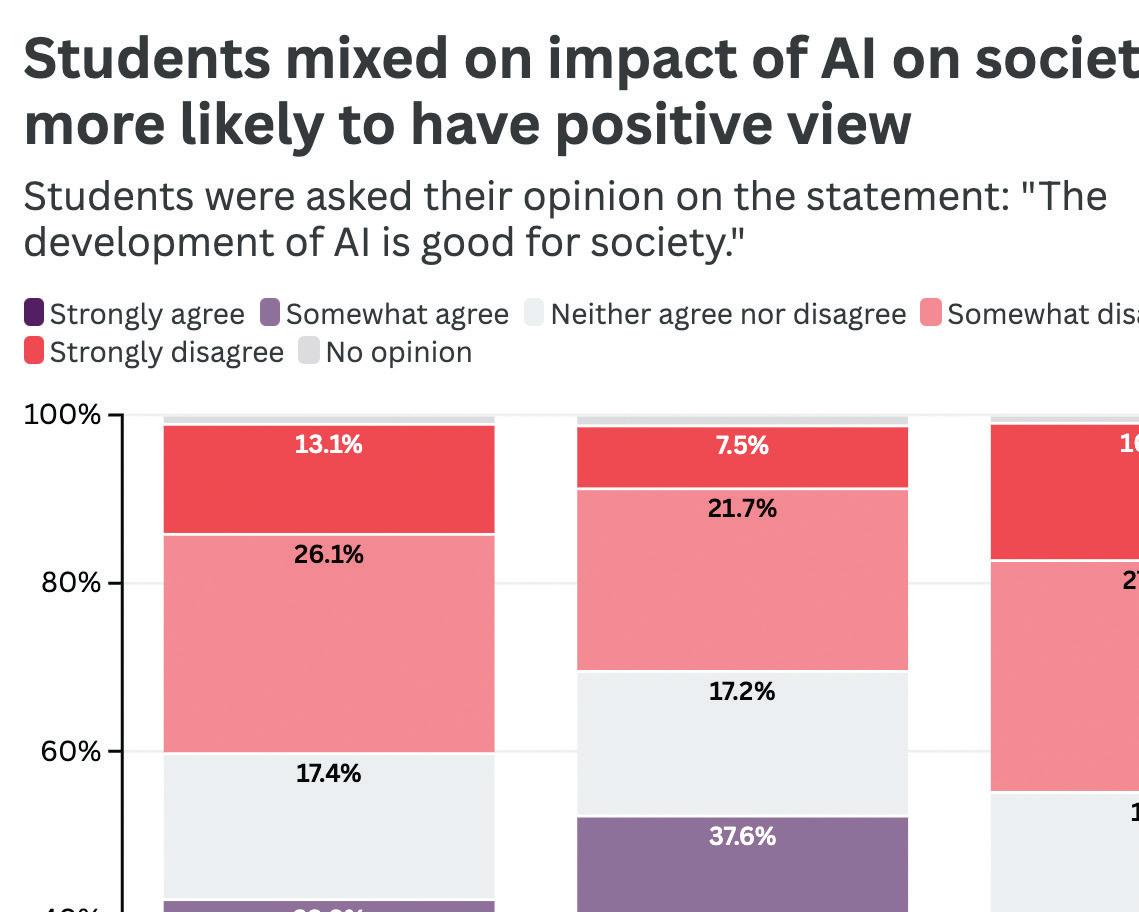
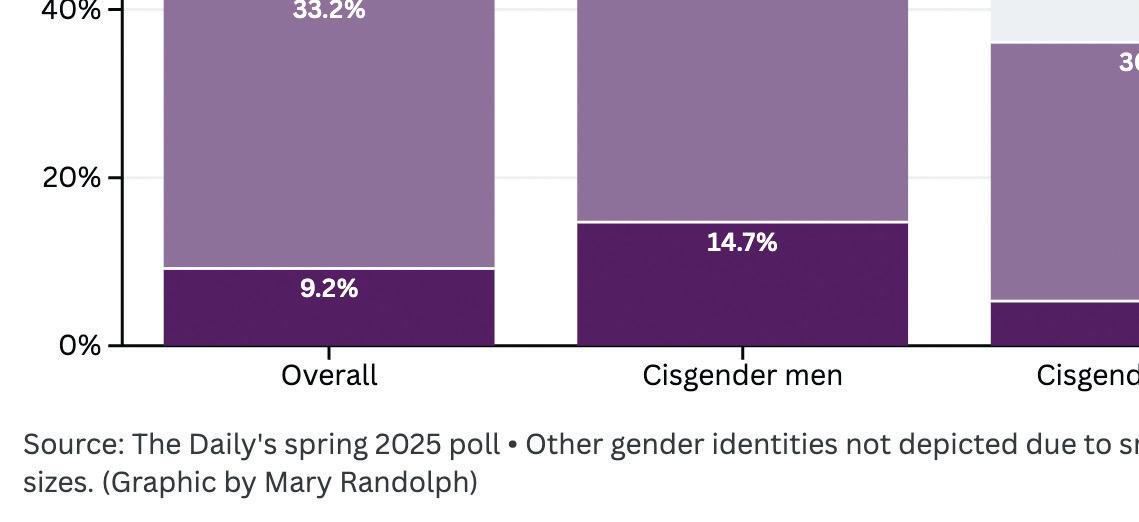
Since Trump took o ce, universities like NU have been deeply impacted by a series of changes to federal policy that impact research and international students.
In April, the federal government froze $790 million in federal funding for NU, one of a series of universities targeted for funding cuts that also includes Columbia University, Harvard University and the University of Pennsylvania.

In e Daily’s survey of NU undergraduates, 43.1% said their educational experience had been a ected by the cuts, while an additional 22.2% said they were not sure.
A larger percent (54.9%) said that the federal government’s stance on higher education in general had a ected their career plans, with one- h of students (21.9%) saying it had done so signi cantly. One student said they planned
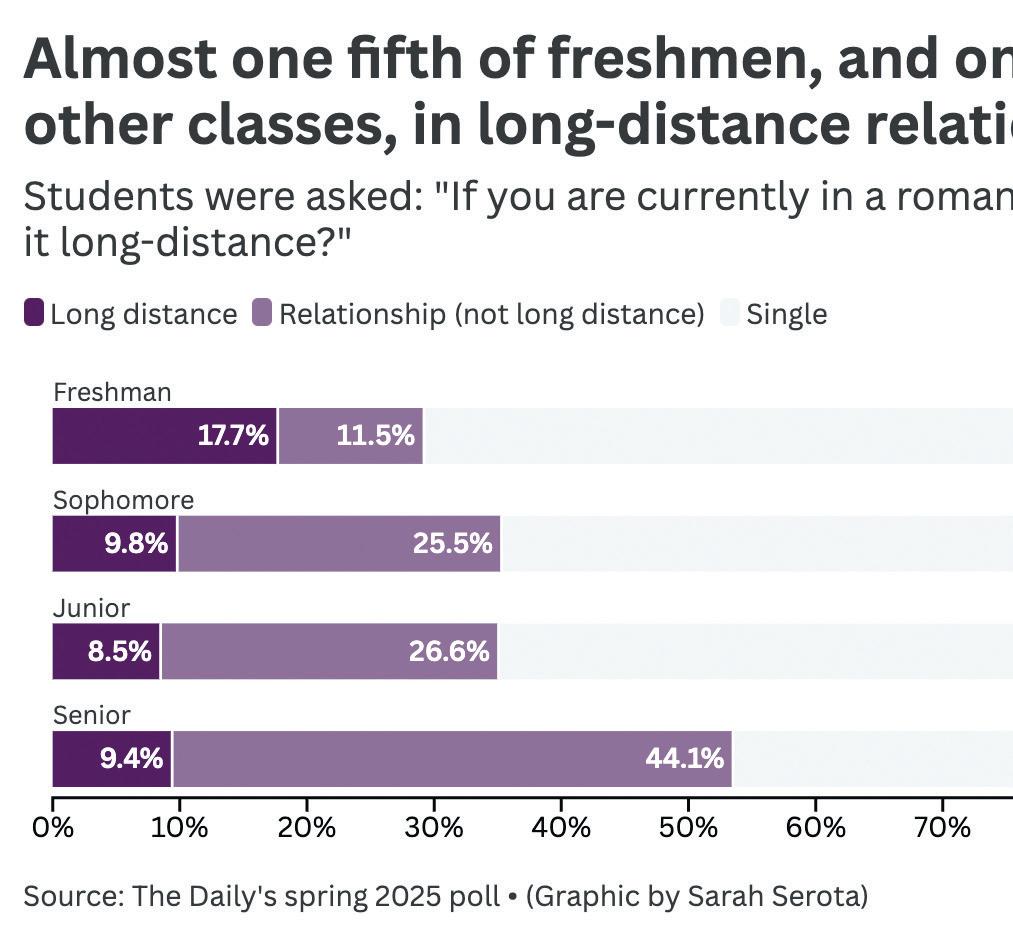
Look to your left. Look to your right. Chances are, at least one of you three is currently in a romantic relationship.
That’s because 38.4% of NU students are now in a romantic relationship, according to the Spring poll numbers.
That number is up from The Daily’s Fall poll, conducted in October, in which 31.9% of students said they were in a romantic relationship. Meaning: congratulations to at least 6.5% of students, who have since found a partner.
We actually know how those new couples met, on aggregate. Among students who

started a relationship in the last year, the most common way they met was through a mutual friend (27.7%), followed by shared extracurriculars (23.9%) and dating apps (18.4%).
These numbers pretty closely reflect numbers for the entire student body who are in relationships. The main difference are the hometown couples: 24.8% of all students in relationships came from the same town or high school as their partner.
11.3% of the student body is in a long-distance romantic relationship

(47.9%) and study course material (42.9%). Many students have used AI to perform rote tasks like writing emails (42.9%) and applications, including cover le ers (36.3%). Outside the classroom, almost a quarter of students have used AI to generate or edit images (22.3%), and 23.1% have sought life advice from AI. Two students even wrote that they’ve used it to generate recipes.
However ubiquitous AI may be becoming, student feelings on it are mixed
While a sizable percent of respondents think AI makes them a be er student (42.7%, compared to 34.7% who say the opposite), only 22.5% of students are optimistic about how AI will a ect their future career prospects, with 51.7% not feeling optimistic.
to pursue a Ph.D. and would go abroad to do so if they cannot secure funding in the United States. ey were not the only student to consider a career abroad. International students have been acutely a ected by the new federal policies toward visas.
In the last month, the federal government terminated student visas and moved to delete records for international students across the country (though records were later reinstated) and, in a few high-pro le cases, a empted to deport students and recent graduates who had
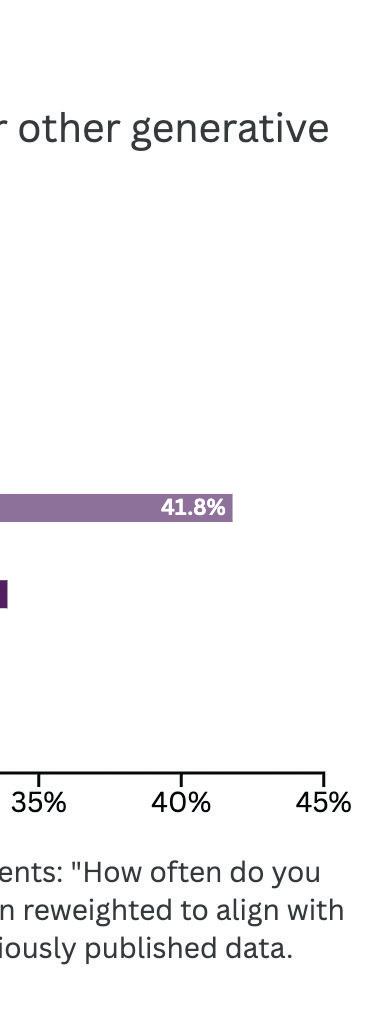
In addition to using AI the most frequently, McCormick students tended to have the most positive views on AI. Over half of McCormick students said they thought AI made them a be er student (54.0%) — more than ten percentage points higher than any other school.
Students are split approximately evenly on whether they think the development of AI is good for society, with 42.4% agreeing and 39.2% disagreeing. McCormick students (55.6%) and male respondents (51.4%) are more likely to have a positive view of AI’s impact on society than the whole student body.
ChatGPT remains the most popular generative AI tool, as 92.5% of respondents said they have used it at least once before. At least 10% of respondents have also used Microso Copilot, Claude, Gemini and Perplexity.
been involved in campus activism. Over half of international students (56.0%) said they had reconsidered plans to pursue a career in the U.S. a er graduation in response to the federal government’s visa and deportation policies; 12.2% of domestic students said the same.
Visa and deportation policies have a ected international students in other ways as well. Many said they had refrained from making public statements, like social media posts (55.8%), and 31.7% said they had avoided leaving the U.S.
Most of those students are currently in long-distance relationships. Among students in relationships, 27.6% are doing long-distance — amounting to 11.3% of the student body.
Perhaps unsurprisingly, that number is significantly higher among first years, with 17.7% of freshmen in long-distance relationships. For older years, long distance numbers hold fairly constant, with 9.8% of second years, 8.5% of third years and 9.4% of fourth years in long distance relationships.
Thirteen percent of students in relationships say they met their partner on a
dating app. That was the fourth most commonly selected option after mutual friends (28.2%), shared hometown or high school (24.8%), shared extracurricular (18.4%) and shared class (13.2%). Less common options included social outings (10.9%) and Wildcat Welcome (9.6%). Respondents could select multiple responses.
Some students wrote in answers. Three students said they met their significant other through Marriage Pact.
One student said they met their partner in Mudd Library. Someone found love in a hopeless place.
Editor Scott Hwang
Assistant Editors
Navya Singh, Grace Wu
Contributors
Angiolillo, Brian Han, Lauren
Web Developer
By NINETH KANIESKI KOSO
daily senior staffer @ninethkk
Members of the Northwestern community are divided over the University’s apology for an April 29 performance held in celebration of Arab American Heritage Month at Sargent Dining Commons during dinnertime, which the University deemed “inappropriate political expression.”
Organized by NU’s dining partner Compass Group, the performance featured dancers waving a Palestinian flag while wearing keffiyehs and camouflage pants.
The dancers’ shirts had an illustration showing the outline of what an FAA Entertainment team member previously described as “historical Palestine” — a map including Israel, the West Bank, Gaza and the Golan Heights — superimposed with a keffiyeh pattern.
In an email to The Daily, a Compass Group spokesperson apologized for the event turning into a “political statement” and “for not adequately vetting the full scope of the performance beforehand.”
“We recognize the gravity of the situation and continue to take action to ensure something like this does not happen again,” the spokesperson wrote.
When Communication Prof. Shayna Silverstein heard that the University condemned the performance, she said she sent an email to NU’s administration. In her email, she said she
State Sen. Laura Fine (D-Glenview) announced a bid to represent Illinois’ 9th District in the U.S. House of Representatives in a Tuesday morning Facebook post. In the post, Fine pointed to the Trump administration as a motivator to run for Congress in what she called a “critical moment.”
contextualized the performance as a scholar “deeply invested” in U.S.-Middle East cultural expression.
Silverstein said she was “disheartened” and “sickened” by the University’s apology, which she described as “censorship.”
While Silverstein said she didn’t want to overlook the fact that students were made uncomfortable by the performance, the University should have used it as a “teachable moment.”
“Fundamentally, the University should provide a space where all of the members of the campus community are able to express who they are (and) where they come from, and acknowledge the complexity and even sometimes contradictory notions of that,” Silverstein said.
Silverstein, a faculty member of the Middle Eastern and North African Studies program, said dabke, the type of Arab dance performed April 29, is a festive wedding dance practiced throughout Palestine, Jordan, Lebanon and Syria.
More recently, dabke has been politicized in the context of the Israeli-Palestinian conflict, Silverstein said. In the mid-20th century, Palestinian dabke became a symbol of national identity, she said.
“The fact that Northwestern committed to this condemnation without taking the time to consult all parties involved, including but not limited to students and faculty experts, is to deny the right to cultural expression, to discriminate against persons in our campus
“Our rights and freedoms are under attack by Donald Trump and his MAGA allies, and the stakes couldn’t be higher,” Fine wrote in the post. “I’m ready to stand up and fight back.”
Fine’s announcement comes just one day after U.S. Rep. Jan Schakowsky (D-Evanston) said she would not seek reelection in 2026. Shortly after, Fine issued a news release commending Schakowsky’s congressional record and committing to “carry her vision forward.”
In her announcement, Fine said her path to state politics began when her husband was in a nearly-fatal car accident and their insurance company denied his care. Fine highlighted her
community based on ethnic and national origin, and to not attempt to recognize legitimacy and the complexity of various perspectives,” Silverstein said.
A Palestinian student, who requested to be anonymous for fear of retaliation, said they found the University’s response to be “incredibly misinformative and racist.” The University called the outlined land the state of Israel, which the student found to minimize the existence of Palestinians and Syrians who live there.
The student said the performance was purely cultural and that Students Supporting Israel at NU, an unregistered chapter of the international pro-Israel organization, politicized the dancer’s clothing because of their race in an Instagram post.
“As an Arab, we rarely see our culture celebrated by the University. MENA Student Association had to push really hard just to get the University to recognize Arab American Heritage Month,” the student said. “To see it happen in Sargent, and have Arab food, to have a cultural Arab performance, is just like such an amazing feeling as an Arab to have that representation.”
SESP freshman Rhea Viswanathan, who attended and participated in the dancing with her friends, said she enjoyed the performance and some of her friends taught her how to do the dance.
When the University apologized and condemned the performance, Viswanathan said she was surprised by the email and felt it was an overreaction by the University.
work on expanding mental health care, reducing the costs of prescription drugs and holding insurance companies accountable as a state senator.
“I’ve always put people over special interests, and that’s exactly what I’ll keep doing in Congress,” she wrote in the post.
Fine has represented Illinois’ 9th state senate district, which includes northern suburbs such as Evanston and Glenview, since 2019. She was preceded by Mayor Daniel Biss and currently chairs the Behavioral and Mental Health Committee.
Fine is the first elected official to campaign
“Personally witnessing the performance, I just didn’t see any of the political charges that they had mentioned,” Viswanathan said. “It didn’t feel like a political performance at all. It felt like a cultural event.”
NU Hillel Executive Director Michael Simon said he was concerned by what the dancers wore, which he said sent a “very jarring message” for a cultural celebration.
“To have (dancers) wearing camouflage pants, which reflect more of a military message than a cultural message, and to have the back of their shirts have a map of what outlines the state of Israel being covered with a keffiyeh, in effect, being an erasure of Israel and putting Palestine in its place, that seems like a very provocative political message rather than a cultural celebration,” Simon said.
Simon also noted that the performance happened on the same day as Yom HaZikaron, a day of memorial for Israeli soldiers and victims of terror.
Simon said seeing the dancers’ camouflage pants and the map could have been insensitive and painful — “whatever the intent of the dancer” — for students who may be connected to victims of terror.
“What could have been a cultural celebration was really diminished by the dancers who chose to do this jarring, provocative move during what otherwise could have been something more in the direction of bridging understanding and connection,” Simon said.
n.kanieskikoso@dailynorthwestern.com
for the 9th District seat. Also running is 26-year-old Kat Abughazaleh, an online personality and former researcher of right-wing media. The Texas native’s campaign has garnered immense online traction, with her original campaign announcement amassing over 13 million views on X.
David Abrevaya and Justin Ford, Chicago Democrats, and Rocio Cleveland, an Island Lake Republican, have also filed paperwork with the Federal Election Commission and launched campaign websites..
Hannah Webster
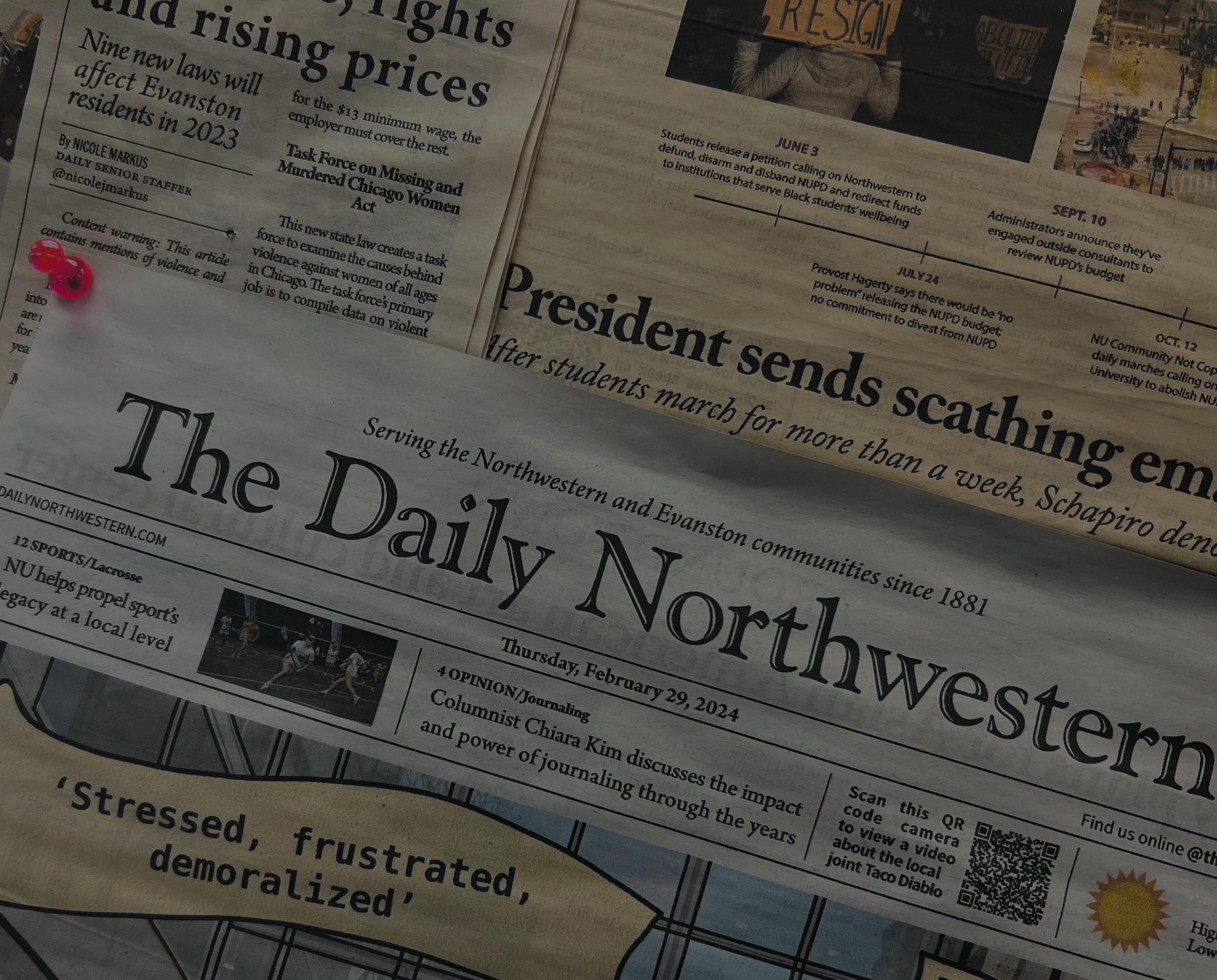

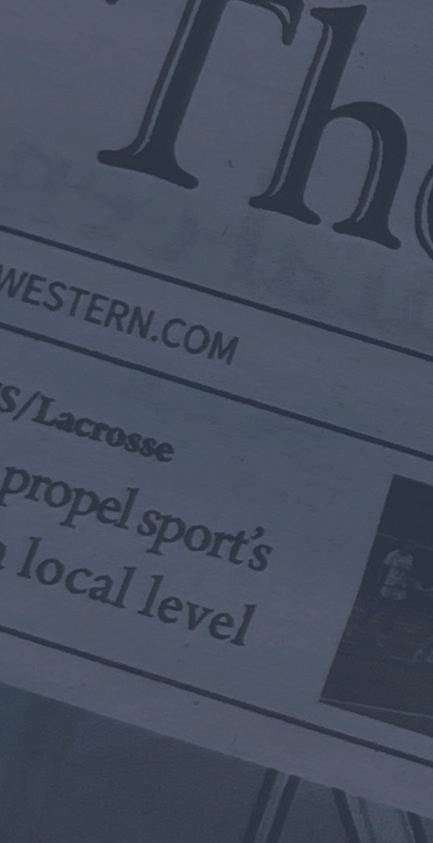
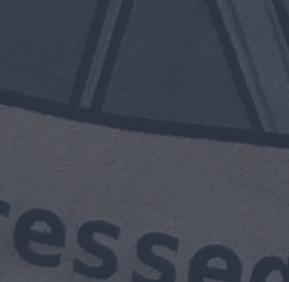




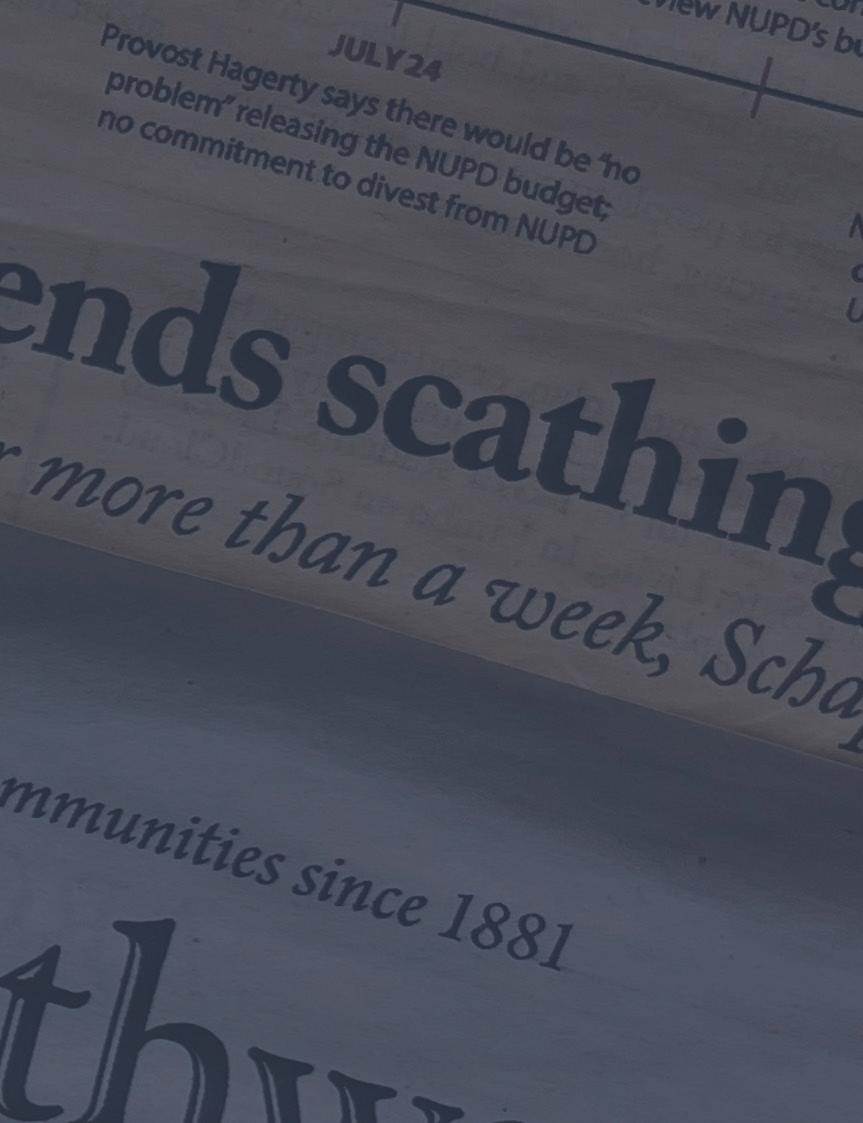



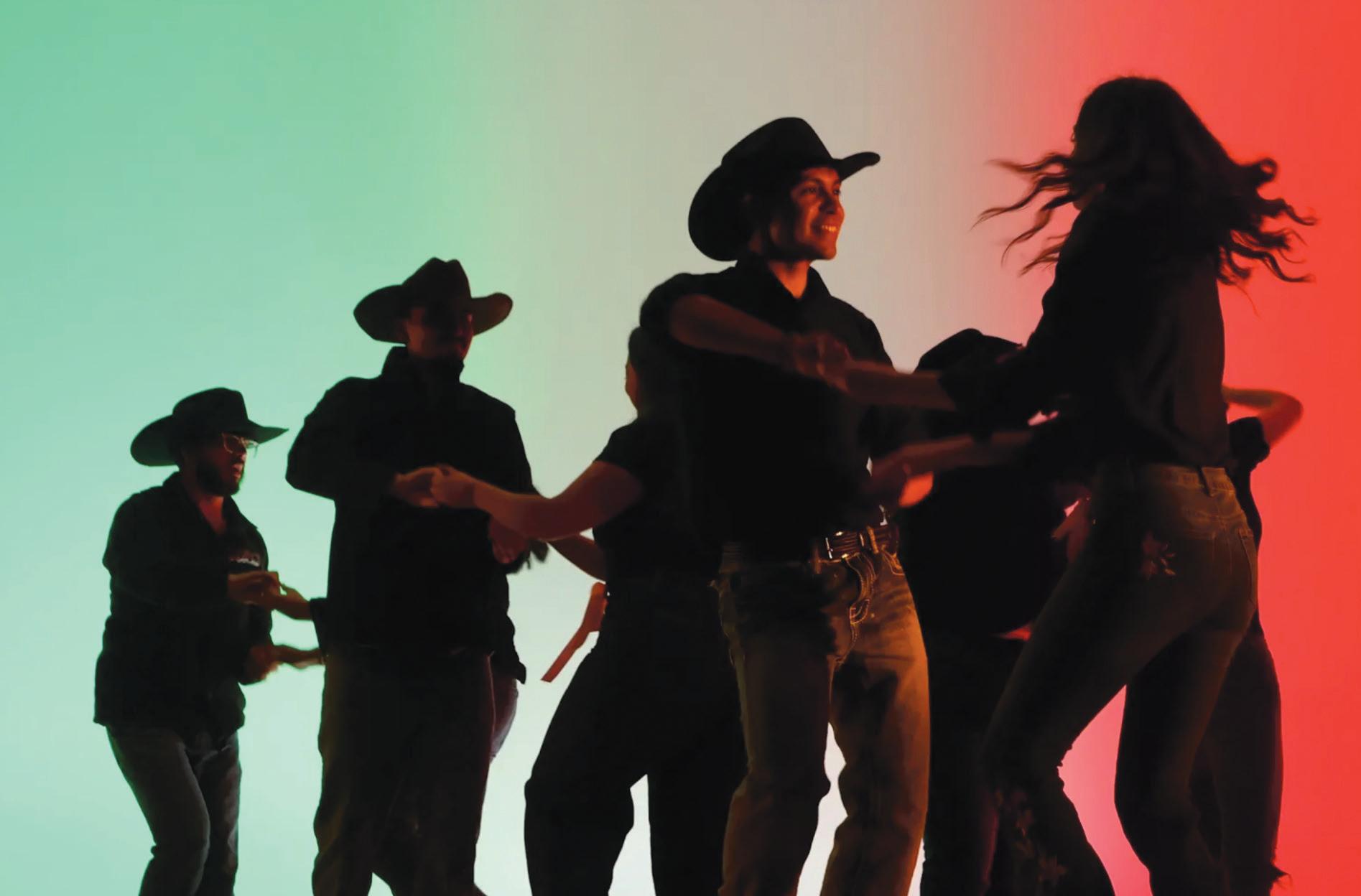
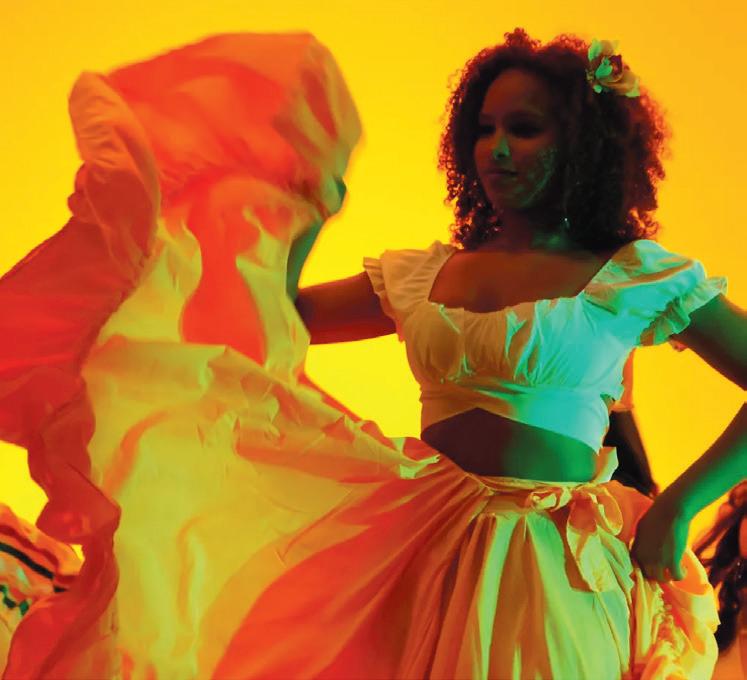



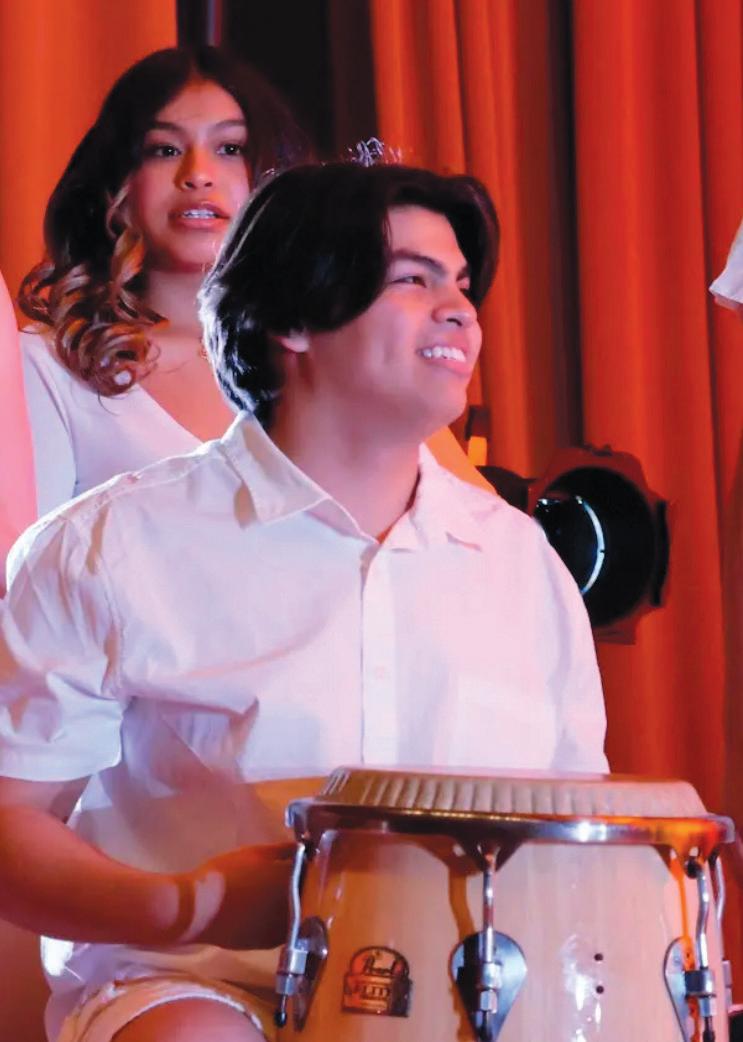
By MIGUEL TSANG the daily northwestern
Keeping with the name of this year’s spring show, Dale Duro Latin Dance Company’s “Mensajes de Amor” centered on all types of love — both among people and for Latin American culture.
The show took place May 2 and 3 and boasted an array of performances from different countries and genres, including salsa, bachata and reggaetón.
As a kid, Weinberg sophomore Nickolas Valdez said he showed love for his culture through his dynamic Latin dance resume. While he didn’t pick up salsa until his senior year of high school, he said he’s now grateful to pass along the Caribbean dance as Dale Duro’s choreographer.
“One part that’s really rewarding for me is (that) not a lot of people know how to dance salsa, especially people at our age,” Valdez said.
By MIGUEL TSANG
“It was nice teaching people that never danced it before how to dance.”
Weinberg senior and Dale Duro co-President Diego Portillo first found out about the group from their freshman year roommate.
They said they always enjoy the busy tech week leading up to the shows because of the time spent practicing with other cast members, painting The Rock and promoting the show.
This year’s tech week was no different, with the anticipation of the weekend’s show hanging in the background, Portillo said.
“The energy of the shows is always so euphoric,” Portillo said. “You’re running on adrenaline and having fun and helping people have a good time.”
One new addition Portillo said they took pride in was the inclusion of bomba as part of Dale Duro’s repertoire this year. The dance hails from historically Black Puerto Rican towns like Loíza.
Saturday’s show featured guest performances
from NU’s Latin Music Ensemble, including the bomba. Weinberg sophomore and LME cofounder Lolo Fiol said the high turnout at Dale Duro performances gives the group a chance to flex their musical muscles for larger crowds.
As a Puerto Rican, Fiol said they are proud to spotlight a dance that has been “swept under the rug.”
“To be able to bring it to a stage in front of, like, so many people who probably have never even heard of it before, is something that was really cool and very special about this opportunity,” Fiol said.
Beyond cultural pride, the performers of “Mensajes de Amor” were proud to pay tribute to Assistant Director Britney Perez, who died in a traffic accident in February.
While SESP sophomore Valentina Parra isn’t a Dale Duro dancer, she emceed the show Saturday to honor Perez. She invited the crowd to join in the wave to channel “a little bit of Britney.”
“If some of you didn’t get the absolute honor
of knowing Britney, this girl was loud, the life of the party,” Parra said to the audience. “I see myself as a solar panel and she’s my sun. … (I’m) sharing a fraction of that energy with you.”
The energy and community of Dale Duro is what made Communication freshman Isabella Polanco fall in love with the dance group.
Polanco said the dance group’s welcoming vibe gives her and others a much-needed breather from social and academic stressors.
“Going into Northwestern, I thought it was gonna look like one thing, and it ended up looking different than I thought it would,” Polanco said. “I’m so eternally grateful for that, because if life had turned out the way I thought it would, I wouldn’t have been in Dale. … I can’t imagine my life without Dale.”
Clarification: This article has been updated to include Britney Perez’s role at Dale Duro as Assistant Director.
migueltsang2028@u.northwestern.edu
of “what it means to be human.”
Benjamin Britten’s “War Requiem” is a rare beast.
Most only get the chance to conduct the piece once or twice in their lives, but director of choral organizations and conducting Prof. Andrew Megill said he is lucky to have done so about ten times.
Megill conducted the piece most recently at a May 3 and 4 concert that combined NU’s Symphony Orchestra with various choirs, including the Bienen Contemporary Early/ Vocal Ensemble, University Chorale, University Singers, Northwestern Camerata and the Alice Millar Chapel Choir.
The piece premiered in 1962 and serves as a scathing critique of war.
The key ingredient that makes the piece noteworthy is what Megill called an exploration
In breaking down the piece’s symbolism, Megill said its title comes from the contrast between a requiem, a Catholic mourning mass, and several poems written by Wilfred Owen, a 20th century pacifist killed as a soldier in World War I. Composer Britten was able to weave the two seemingly unrelated events together to create a musical cautionary tale about the dangers of war.
Megill emphasized how the key ingredient to “War Requiem” is its grace in handling such heavy themes.
“There are no villains in the piece,” Megill said. “It’s less (about) blaming the warmongers and always keeps in mind that the people who do evil in this world are not that much different from you and me.”
Because of its universal messages, Megill said he believed it was important to make sure concert programs had translations of lyrics to make the concert as accessible as possible. He
said anyone, especially people who aren’t into classical music, can take home something valuable from “War Requiem.”
Even though Megill is no stranger to the game, he said pulling off the “War Requiem” always requires a large recipe.
“It’s an incredibly expensive thing to put on,” Megill said. “It calls for two orchestras — a large orchestra, a small orchestra … two choirs — a huge choir and a small choir. It calls for a soprano soloist, a tenor (and baritone) soloist.”
The event enlisted the help of soprano soloist and graduate student Cynthia Hu. She said she was grateful to take part in the experience and emphasized how opportunities like performing the “War Requiem” don’t come often.
“It’s kind of a big deal that Northwestern is doing it,” Hu said. “This is kind of a once in a lifetime opportunity to perform a work like this. … I’m probably not going to do it again for a very long time.”
Hu found out she would be performing the
Requiem three weeks into Winter Quarter and has been on a tight practice schedule ever since. She said her training was more similar to preparing for an opera than a regular concert.
Hu’s practice more than paid off, as she has become a well-known voice among other singers.
Weinberg freshman Isa Melián, who is part of Chapel Choir, said hearing Hu sing was always a bright spot of rehearsal.
“If I were blindfolded and she was singing, I would be able to tell (it’s her),” Melián said. “She has such a unique tone.”
Hu said she, along with all other performers, were “stakeholders” in the project. She said a lot of her motivation to keep up with practice came from Megill’s passion for “War Requiem.”
“I think that’s why it’s so rare. … There are a couple hundred people that are really united to tell this story,” Megill said.
migueltsang2028@u.northwestern.edu
BEHAILU MIHIRETE
OP-ED CONTRIBUTOR
President Schill,
On April 17, I learned with relief that our University had decided to “fund research that is subject to stop-work orders or the federal funding freeze.” I hoped that would be the beginning of more reassuring gestures from your office. More specifically, I hoped that Northwestern would, like Harvard University, stand up more assertively to the dictatorial overreach of the Trump administration. I haven’t seen much.
We can imagine why Trump’s attacks on universities have come in phases. His administration, which usually floods the zone with so much flagrant activity that critics can hardly react, could have issued stopwork orders to all universities at once.
Yet, like a predator, it isolated and attacked a few at a time, starting with big targets as if to send a message to the smaller ones. Such a tactic makes victims feel helpless while silencing future targets with the hope of a softer blow, if not mercy. Thus, they become complicit through their silence.
Pastor Martin Niemöller looked the other way when the Nazi party attacked socialists, trade unionists and Jews, hoping Hitler would never come after Christians and their church. By the time he realized they were only saved for last, it was too late. Niemöller lived a life of regret, which is documented
in his confession-like lectures popularly known as “First they came for…”
History warns us against appeasing bullies. In 1935, when Benito Mussolini invaded my country, Ethiopia, officials in the British and French governments thought the African nation (a sovereign member of the League of Nations, just like Italy) should be sacrificed to maintain peace in Europe.
The Hoare-Laval Pact, named after its architects — British Foreign Secretary Sir Samuel Hoare and French Prime Minister Pierre Laval — essentially volunteered “two-thirds of Ethiopia to the Italians,” hoping it would stop Mussolini from allying with Hitler. It did not work.
Instead, Hitler took note. A year later, he invaded the Rhineland. Then Austria. Then the Sudetenland. Prime Minister Neville Chamberlain’s appeasement policy was cheered as pragmatic.
Only a few, such as Winston Churchill, knew these aggressions were only the beginning. They knew that bullies wouldn’t stop unless they were stopped. They knew the appetite of the pathological predator couldn’t be satiated through appeasement. If anything, appeasement only reveals whom or what the appeaser considers sacrificable.
When I saw NBC’s report reading, “Over 150 college presidents sign letter rebuking ‘government overreach,’” I hoped to see your name attached. By the time I opened “A Call for Constructive Engagement” on the afternoon of April 22, over 210 leaders of U.S. academic institutions had signed it. Your name was absent.
Only much later did your signature appear, joining nearly 270 others. The Daily Northwestern kindly
observed, “Schill’s signature appeared a few hours after the statement’s initial release.”
Why the wait? Why would one of the wealthiest and highest-ranking universities in the world wait for hundreds of others to show their cards before revealing its own?
Apparently, while other universities were speaking truth to power, ours was busy intimidating its vulnerable students, threatening those who do not complete a twisted “anti-bias training” with “University action, including a registration hold.”
The differential potency of this threat becomes legible only when we consider what a “registration hold” can mean for international students. A hold on registration could eventually result in a loss of full-time enrollment status. And federal immigration regulations stipulate that F-1 and J-1 visa holders “who are not enrolled full time … violate their student immigration status.”
Thus, to secure a marginally less precarious existence, we must watch the University’s biased “anti-bias training,” which insists that phrases such as “coastal elites” are euphemisms for Jews. We hear that phrase in conservative public spheres every day. U.S. Sen. Ted Cruz (R-Texas) called Democrats “the party of coastal elites” in a Fox interview. Yet, in the wrong mouth and on the wrong campus, it could be considered antisemitic. If we reject this absurdity, we can legally be sacrificed at the Trump altar.
As Wesleyan University President Michael Roth, a Jewish historian, rightly points out in a New York Times essay, “Jew hatred is real, but today’s anti-antisemitism isn’t a legitimate effort to fight it. It’s a cover for a wide range of agendas that have nothing to do
with the welfare of Jewish people.”
In an interview with Christiane Amanpour, Roth explained that it was “the outrageous arrest and threatened deportation of international students (that) really made me stand up and write.” He added, “We don’t want to see our students living in fear of their own government.”
What are you doing to ease our fears, President Schill?
As co-president of the African Graduate Student Association, I hear fellow African students’ fears every day. At an April 17 rally on NU’s campus, many students spoke of their fears — fears of being doxed, deported and sacrificed — because they do not feel protected by their University.
Speak up, President Schill. Show us that you’ve got our back as we navigate these uncertain times. In times of injustice, silence is not prudence; it’s complicity.
On June 30, 1936, when the League of Nations turned its back on my country to appease Mussolini, our Emperor Haile Selassie I warned the congregants in Geneva that “God and history will remember your judgment.”
How do you want history to remember yours?
Behailu Mihirete is a third-year Ph.D. student in the Rhetoric, Media, and Publics program of the School of Communication. He can be contacted at behailumihirete@u.northwestern.edu. If you would like to respond publicly to this op-ed, send a Letter to the Editor to opinion@dailynorthwestern.com. The views expressed in this piece do not necessarily reflect the views of all staff members of The Daily Northwestern.

OP-ED CONTRIBUTOR
I’ve always been a harsh judge of time.
In my almost four years at Northwestern, that hasn’t changed. A packed schedule of club meetings, class assignments and reporting was built on a strict work ethic, classifying time either as productive or non-productive.
If I ate lunch and called my parents, that was definitionally a non-productive hour. If I didn’t check enough boxes off my to-do list on a random Tuesday, that was a non-productive day. Time was rarely constructive by this rubric.
This is a completely unsustainable mode of thinking, and one of the biggest causes of the persistent burnout we may feel when things get busy in our academic lives.
As I work through my final quarter at NU, I’ve spoken with many close friends about this mode of thinking, this tendency to scrutinize time if it does not put a dent in their to-do list. It seems to resonate with many of them.
This way of seeing things clearly came from somewhere.
Given NU’s status as an elite university and the
LTE: Journalists must remain objective
In his April 28 op-ed “Journalists, what side of history are you on?”, Gabe Hawkins wrote that journalistic objectivity was “drilled into” his skull during his first year at Medill. I’m glad to hear that, because Medill professors drilled journalistic objectivity into my skull during my first year there more than 60 years ago. It shows that Medill’s values are consistent and have stood the test of time.
My professors taught me that journalism must be based on facts, not feelings. They emphasized the five W’s and the one H — who, what, where, when, why and how — as the basic elements of a news story. They told students to report all sides of a conflict or issue, but not to take sides. They also warned us never to become part of any story we covered. I believe that still holds true today.
This means reporters should not wear a Black Lives Matter T-shirt while covering a protest. Nor should they wear a MAGA hat while covering a Trump rally. Political reporters must not endorse or campaign for candidates they cover, although they can and should vote because that is their constitutional right and civic responsibility. Business journalists should not invest in companies they cover, and sports reporters should not bet on teams they cover. Involvement is a conflict of interest.
Hawkins questions the career path he chose. He asks, “How can I enter a profession where having a strong opinion is deferential to my work?” While
work it takes to get here, it is easy to see college as an extremely high-stakes time. We may believe our shortterm and long-term success in life lies in what we can do in just four years.
We must accomplish the letter grades we need to ensure we even have a fighting chance at the jobs or advanced educational opportunities we so badly want.
We search for the solutions to our productivity woes, to reduce the non-productive time we feel is in excess, with the belief that we CAN eventually get full control of our lives with the right strategy.
Technology can play a big role here. We may use AI like ChatGPT to condense our work — to make it go quicker. But instead of just making our lives easier, it makes our lives faster.
Social theorist Hartmut Rosa called this phenomenon “social acceleration.”
If I was to read two 30-page academic articles for a social science class in one sitting, it would take roughly an hour and a half. If I were to use ChatGPT, I could produce two short summaries in seconds.
I’m guilty of using this shortcut. But the result is clearly not the same, even beyond the difference in time the options take. Reading those two articles means closely engaging with the ideas in a deep way, potentially leading to a shift in our thinking. Reading summaries off ChatGPT cannot do that. It follows that the former can energize our ability to engage with concepts, while the latter cannot.
But the loss of learning for the sake of learning may
LETTER TO THE EDITOR
admitting that objectivity is critical to journalism, he argues that journalists face a choice to sacrifice their commitment to objective reporting in favor of standing up for what they feel is right.
His remarks seem to echo the words of Medill Prof. Steven Thrasher when he addressed a crowd at Deering Meadow during the pro-Palestinian encampment last year. “To the Medill students and journalists within ear shot, I say to you: Our work is not about objectivity,” he said. “Our work is about putting your brilliant minds to work and opening your compassionate hearts.”
I was shocked to read these words spoken by a Medill professor and regarded them as an act of unprofessional conduct. Such a statement by a journalism professor would have been unimaginable when I was a Medill student because the political and media landscapes were much less volatile and fragmented than they are today. Most people got their news from broadcasting stations, newspapers and magazines. There were only three TV networks back then, and each aired a 30-minute evening newscast.
The most respected broadcast journalist was CBS Evening News anchor Walter Cronkite, who helmed the program from 1962 to 1981. He was called “the most trusted man in America” because of his objective, unbiased reporting. Viewers of all political persuasions felt they could rely on him to present the straight facts of any story, untainted by personal opinion.
I can’t think of any journalist today who commands that level of respect, partly because the media environment has drastically changed since Cronkite’s era. In addition to broadcast TV networks, there are
be treated as merely an unfortunate casualty. In a highstress world where a good GPA can be the difference between getting into a dream law school or a good job out of college, we may feel pressured to disconnect from passion and prioritize efficiency.
If we constantly try to plan or structure our world around an unreasonable concept of productivity, we are more inclined to view it as unproductive if we don’t accomplish exactly everything we want and more.
In this process, we lose something foundational.
We lose the wonder and spontaneity that makes us human, the curiosity that first made us perk up in the classroom as youngsters.
We come to NU often expecting to have it all figured out after four years and view our time as a void to be filled with the means to get us there.
But what about that activity you always wanted to try?
What about that genre of literature you’ve always wanted to get into?
Those things should not wait until after graduation, and they shouldn’t even wait until you’ve finished that one political science essay.
The solution to burnout is a redefinition of what makes our time productive. It requires a reclamation of what drives us and moves us as people.
Calling my parents while eating lunch instead of working on something may not be productive to me as a student, but it is extremely productive for me as a human. Family connection can be such a boon for
several politically polarized cable news networks. Fox News is a MAGA mouthpiece, while MSNBC is a bullhorn for the liberal resistance. Partisan rhetoric replaces objective reporting on both outlets. Also joining the media mix are podcasters, influencers and social media platforms that largely eschew objectivity.
Journalists are under intense pressure from the Trump administration. They also face job insecurity in a financially threatened profession. Nearly 10,000 journalists were laid off in the past three years. Legacy and new media outlets are losing money. The Washington Post lost approximately $100 million in 2024, and it is hardly alone in bleeding cash.
Given all these pressures, I’m surprised that students still want to be journalists, but glad they do, and that includes Gabe Hawkins. He appears to be undecided over whether to pursue objective reporting or become an activist. I hope he chooses the former. But if we blur the lines between journalism and activism to the point that there is no meaningful distinction between the two, we risk undermining journalism’s core function of delivering unbiased facts to the public.
I’m pleased that Medill retains the standards and values that it taught students when I was there. They have served my alma mater well for more than 100 years, and hopefully, will continue to do so in the future.
Richard Reif is a Medill alum who graduated in 1964. He can be contacted at dick.reif@gmail.com. If you would like to respond publicly to this op-ed, send a Letter to the Editor to opinion@dailynorthwestern.com. The views expressed in this piece do not necessarily reflect the views of all staff members of The Daily Northwestern.
ensuring I stay anchored to the people that bring me stability.
Spending a day reading an unassigned book on a random topic of interest is not productive by my current rubric, but it is very productive if it feeds the very human desire for knowledge.
This is not a call to abandon education or ambition, but an appeal to be kinder to ourselves and more cognizant of what we value on a daily basis. It means recognizing that we as human beings have needs beyond eating and sleeping. We need to learn, create, connect, disconnect, engage, revise and contemplate. So, as you work to get a good grade on an exam or in a class, remember that you are more than a series of letters in a column, and even more so that a stressful monotony is not the only way to move through your college life.
We are humans first, and students second. By redefining the way we see our very short time at this school and indeed on this Earth, we are not diverting our energy from what we really want, but protecting its sustainability down the road as we pursue our dreams.
Raj Ghanekar is a Medill senior. He can be contacted at rajghanekar2025@u.northwestern.edu. If you would like to respond publicly to this op-ed, send a Letter to the Editor to opinion@dailynorthwestern.com. The views expressed in this piece do not necessarily reflect the views of all staff members of The Daily Northwestern.
The Daily Northwestern Volume 149, Issue 5
Editor
Opinion
Assistant
LETTERS TO THE EDITOR may be sent to 1999 Campus Drive, Evanston, IL 60208, via fax at 847-491-9905, via e-mail to opinion@ dailynorthwestern.com or by dropping a letter in the box outside The Daily office.
Letters have the following requirements:
• Should be typed and double-spaced
• Should include the author’s name, signature, school, class and phone number.
• Should be fewer than 300 words
They will be checked for authenticity and may be edited for length, clarity, style and grammar.
Letters, columns and cartoons contain the opinion of the authors, not Students Publishing Co. Inc. Submissions signed by more than three people must include at least one and no more than three names designated to represent the group.
Editorials reflect the majority opinion of The Daily’s student editorial board and not the opinions of either Northwestern University or Students Publishing Co. Inc.
By DALTON HANNA the daily northwestern @daltonhanna06
Drums echoed through Welsh-Ryan Arena Saturday afternoon as Northwestern’s Native American and Indigenous Student Alliance hosted its fourth annual Pow Wow, where attendees of all ages gathered to celebrate Indigenous culture and community.
Over 1,000 NU students and Indigenous community members from across the Midwest attended the Pow Wow. This year’s Pow Wow theme was “Honoring our Relatives.”
The event coincided with the National Day of Awareness for Missing and Murdered Indigenous People, which falls on May 5, inspiring the theme of honoring ancestors.
“It’s a really good theme, especially this year with the whole Trump administration, a lot of groups are just scared,” Weinberg senior and Pow Wow attendee Isaiah DeLeon said. “Being able to still be a part of this community and for the people of NAISA to be able to put this on and still have an incredible turnout is really important.”
The Pow Wow began with a land acknowledgment, grand entry and convocation. Throughout the day, Native American dancers and student groups performed, including Northwestern Mariachi and a group of Teyukhilihwakhwá·seheɂ Singers from The Indian Community School in Franklin, Wisconsin.
Four Drum groups also provided music throughout the day. At powwows nationwide, the Drum represents the Earth’s heartbeat, spiritually connecting participants through shared rhythm and cultural identity.
Vendors like Lisa Bernal lined the second floor of Welsh-Ryan selling products like beaded jewelry, books that focused on stories of Indigenous peoples and traditional regalia. Bernal sold handmade beadwork, a craft she said she learned from her mother.
“It’s a great learning opportunity for students to be present, to hear and see what our social gatherings consist of,” Bernal said. “They learn a little bit more about who the people are, what the resources are, what the work is that people are doing and the craftsmanship and artistry that is in our culture.”
NAISA introduced several changes to the Pow Wow this year, including the release of a zine — a collection of text and artwork — that honored
the Pow Wow and its theme. The zine showcases artwork from 13 artists, both NU students and other Indigenous artists.
The Pow Wow Planning Committee also eliminated the break that previously took place in the middle of the day, Weinberg junior and Pow Wow Planning co-Chair Kaya Payton said, to encourage greater attendance.
“One of our goals this year was to get people to stay longer,” Payton said.
While the numbers this year were fairly similar to attendance at previous NAISA Pow Wows, the crowd size remained consistent throughout the event.
Many of the community visitors from outside NU expressed that attending the NAISA Pow Wow has become an annual tradition for them. Bernal loves coming back each year, and her son looks forward to the event, she said.
“My favorite part is being able to see friends,” Bernal said. “There are people here that live out of state that come back, alumni from Northwestern that come back. We’re all in one space, realistically, it’s just being able to visit with friends.”
d.hanna@dailynorthwestern.com
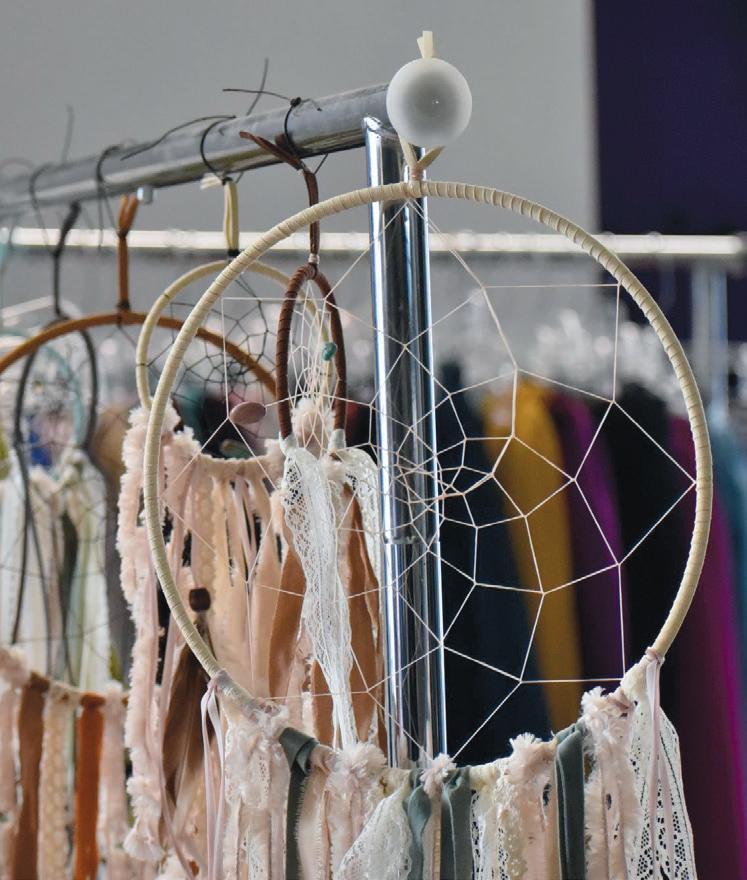
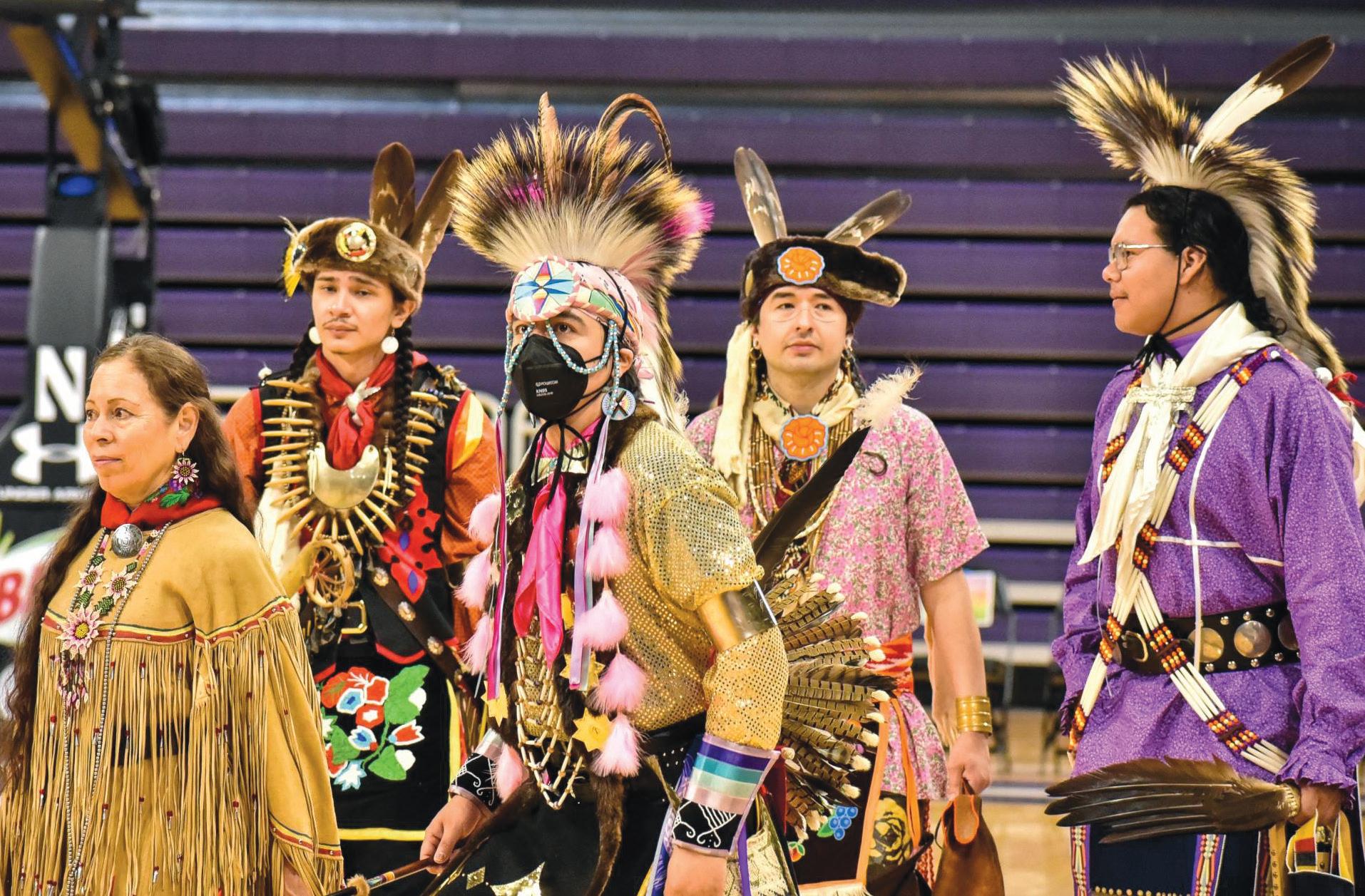


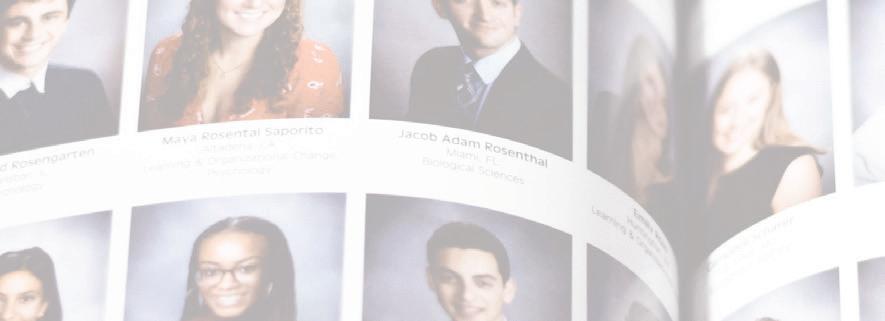
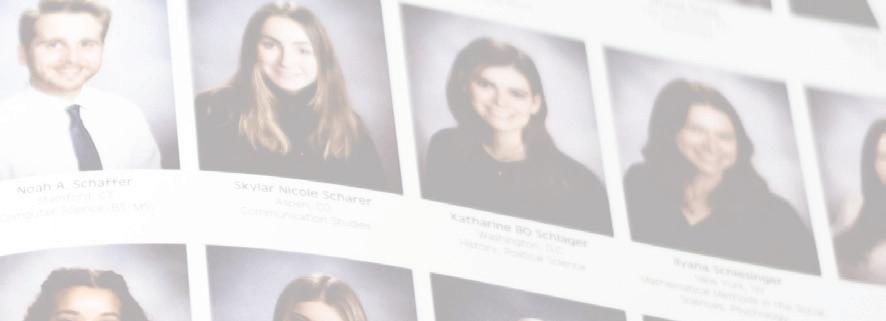














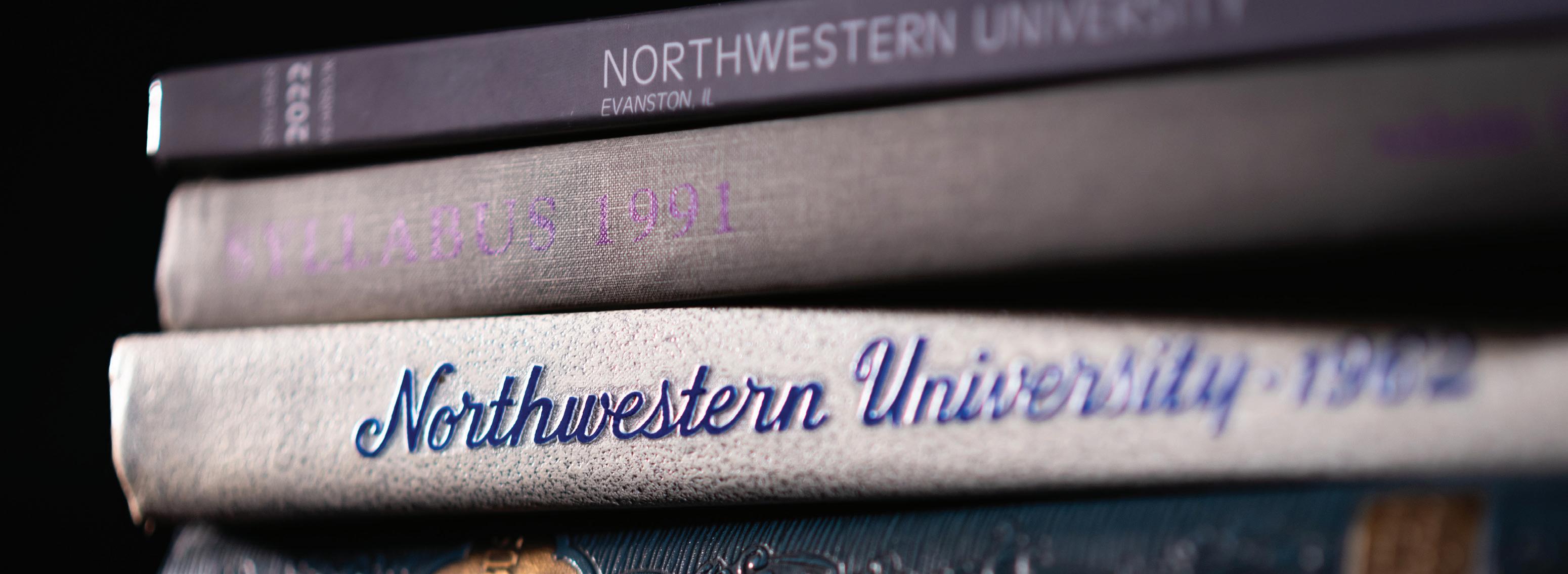

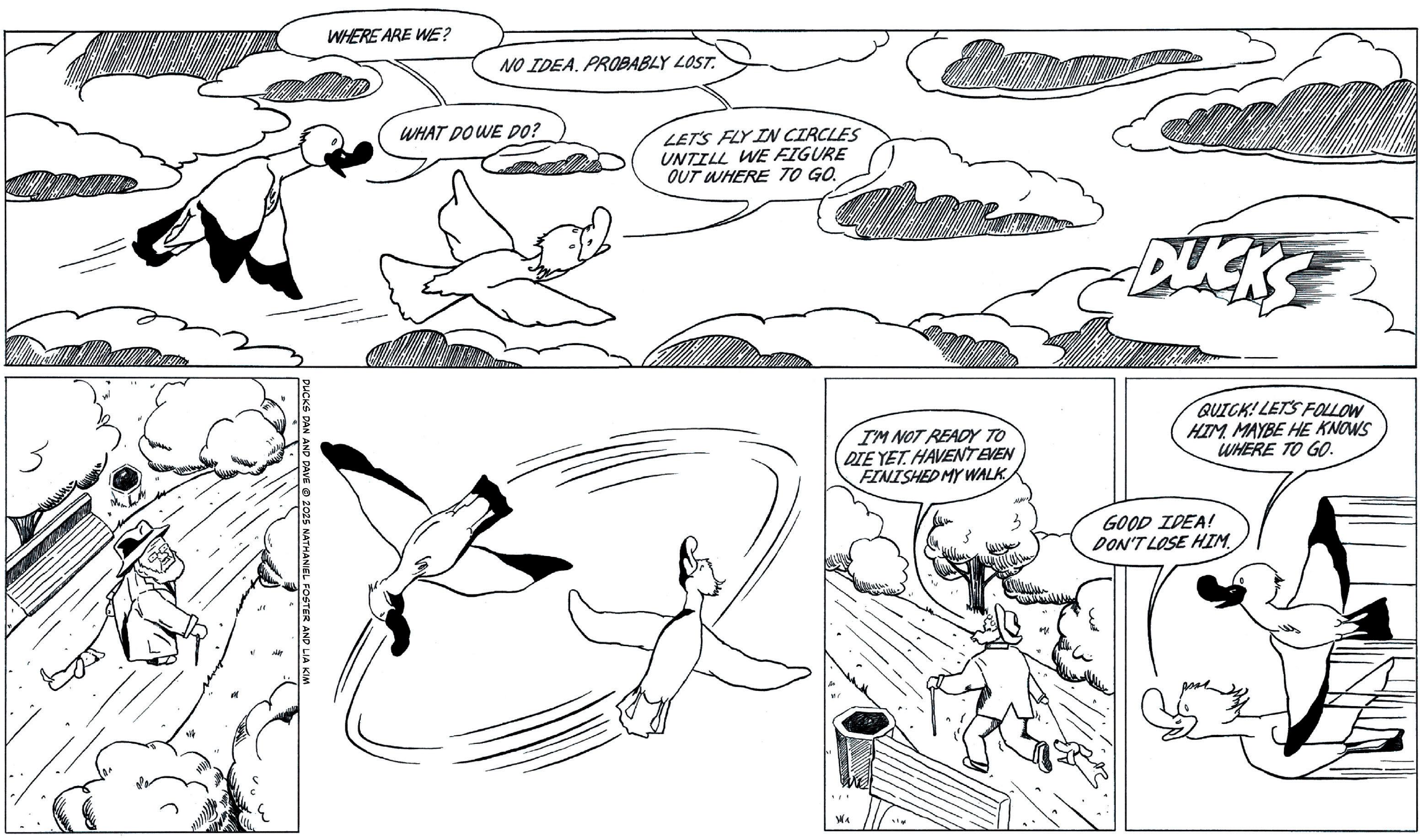
Nathaniel Foster is a student at the School of Professional Studies and writer of Ducks Dan and Dave. He can be contacted at nathanielfoster2027@u.northwestern.edu. Lia Kim is the illustrator for Ducks Dan and Dave and is not associated with Northwestern. e views expressed in this piece do not necessarily re ect the views of all sta members of e Daily Northwestern.
ACROSS
1. Stephen Curry’s team
8. Last name of the NBA’s all-time points leader
DOWN
1. Rolex is a Swiss _____ brand and manufacturer
By Games Editor
13. A South Asian term for potatoes found in the names of many dishes
14. Not genuine; counterfeit
ACROSS
16. Items used to fasten fabric to furniture for decorative purposes
2. Describes the silhoue e or shape of a garment
3. Braided strands of bers
4. Carrots and beets are ____ vegetables
5. Illegal position in soccer
1 Stephen Curry’s team
18. Part of NBA game where the ball is thrown in the air and opposing players try to gain possession of the ball
20. Most popular vacation state in India, known for its beaches
21. A website that publishes product reviews, advice and how-to’s
22. “Every _______ is a setup for a comeback”
25. “ ____ the man”
6. Northwestern students complete CTECs to ____ courses and professors
8 Last name of the NBA’s all-time points leader
37 A Thanksgiving delicacy, typically served alongside turkey
7. A sour lentil-shaped candy, singular
9. Symbol in an email address
10. State where basketball was invented, abbr.
13 A South Asian term for potatoes found in the names of many dishes
38 An American fashion doll and media franchise
11. A test that measures the electrical activity of the heart
12. Annual meeting for sales leaders, abbr.
15. To preserve a dead body
14 Not genuine; counterfeit
26. A small, deep-fried potato cylinder
27. Most exchanged currency in the world, abbr.
29. A health organization that focuses on funding research and providing resources for blood cancer patients
39 A global logistics and transportation company
17. NaCI
19. College students love Uber ____!
16 Items used to fasten fabric to furniture for decorative purposes
30. ree-time Chicago Bulls champion B.J. Armstrong is reportedly joining this NBA franchise as an assistant general manager
33. Mel Robbins’ catchphrase minus the ‘th’
34. Fuel for a car
37. A anksgiving delicacy, typically served alongside turkey
38. An American fashion doll and media franchise
23. Used to denote the years a er the birth of Jesus Christ in the Gregorian Calendar
40 Menu items that both Chipotle and Sweetgreen offer
24. Two-le er country code for the nation that occupies the southern half of the Korean Peninsula
18 Part of NBA game where the ball is thrown in the air and opposing players try to gain possession of the ball
43 A statistic on your college transcript
28. Clever at hiding one’s goals or purpose
44 A firearm
30. First Canadian to lead the NBA in scoring during the regular season, abbr.
31. “thank u, next” singer, informally
32. Nickname of the red-headed character on Nickelodeon’s Victorious
45 A machine that allows customers to access their bank accounts
20 Most popular vacation state in India, known for its beaches
39. A global logistics and transportation company
40. Menu items that both Chipotle and Sweetgreen o er
43. A statistic on your college transcript
44. A rearm
45. A machine that allows customers to access their bank accounts
46. Spanish word for “bu er y”
34. An item or device designed to restrain and prevent speech
46 Spanish word for “butterfly”
35. Roger Federer’s former tour, abbr.
36. “All the Stars” singer who is currently on tour with Kendrick Lamar
21 A website that publishes product reviews, advice and how-to’s
38. UK daylight savings time, abbr.
49 A message designed to inform or educate people, abbr
40. e 41st U.S. President, Last Name, Middle initials
41. An idiom that means to take a risk
52 Amy ______, an actress and comedian
42. Sparkling water brand
44. Party ____ (frequent a endee)
54 Animals associated with Halloween
22 “Every _______ is a setup for a comeback”
25 “ ____ the man”
46. A non- owering plant classi ed as a bryophyte
49. A message designed to inform or educate people, abbr.
52. Amy ______, an actress and comedian
54. Animals associated with Halloween
47. Online address, abbr.
26 A small, deep-fried potato cylinder
55. A standardized test widely used in U.S. college admissions
58. An animal part of the African Big Five that is critically endangered
59. Full of heat, avor-wise
48. A box o ered by USPS
55 A standardized test widely used in U.S. college admissions
49. e “City of Love”
50. A block found in Minecra
27 Most exchanged currency in the world, abbr
51. Anything owned that has monetary value
53. A process requiring the absorption of heat, abbr.
58 An animal part of the African Big Five that is critically endangered
54. A city in Oregon
59 Full of heat, flavorwise
62. CIA branch on nuclear threats, abbr.
63. A baseball game has ____ innings
64. Georgia is nicknamed “ e _____ State”
65. e full Harry Po er series in one package
29 A health organization that focuses on funding research and providing resources for blood cancer patients
56. What you “install” on your phone, singular
57. A narrow piece of fabric worn around the neck
62 CIA branch on nuclear threats, abbr
60. “ e Golden State,” abbr.
61. Startup accelerator, abbr.
30 Three-time Chicago Bulls champion B.J. Armstrong is reportedly joining this
63 A baseball game has ____ innings
64 Georgia is nicknamed “The _____ State”
65 The full Harry Potter 3 Braided strands of fibers
Carrots and beets are ____ vegetables 5 Illegal position in soccer 6 Northwestern students
crossword & games
By MARISA GUERRA ECHEVERRIA daily senior staffer @marisa_g_ech
In his latest crackdown on immigration, President Donald Trump ordered the publication of a list of “sanctuary” cities and states “obstructing federal immigration law enforcement” and threatened to cut their federal funding in an April 28 executive order.
The jurisdictions in question are cities and states that withdraw local participation from the U.S. Immigration and Customs Enforcement’s civil deportation efforts, according to Mark Fleming, the associate director of litigation at the National Immigrant Justice Center in Chicago.
The administration’s list may include Evanston, which strengthened its own 2016 Welcoming City Ordinance in January to protect residents, regardless of immigration status, from federal crackdowns under the second Trump administration.
The list will be published by late May, as decreed by the order. Still, in a statement to The Daily, the City of Evanston said it remains committed to its ordinance and is not involved in any litigation at this time.
“The City of Evanston continues to closely monitor executive orders, various legal proceedings, and related developments at the federal level,” the statement said. “It is unclear what, if any, impact there is for Evanston at this time.”
While the order’s impact on the city remains uncertain, the Trump administration has recently targeted the Chicago area for immigration crackdowns. The Department of Justice sued Chicago, Cook County and the state of Illinois for their respective “sanctuary” laws in early February, following leaked plans of deportation crackdowns in Chicago soon after Trump’s inauguration. More recently, the DOJ sued the state of Illinois for worker privacy provisions it alleges interfere with federal immigration enforcement.
Still, “sanctuary” city designations, though polarizing in national politics, are not officially defined in federal law.
While the executive order accuses these jurisdictions of “non-compliance” with federal immigration enforcement, Fleming said it is not the jurisdictions’ legal role to participate in deportations.
The decision to withdraw from federal

deportation efforts is crucial in cases of civil enforcement because it keeps officials from deporting people solely due to their immigration status. However, for criminal matters, cities still enforce state and local criminal laws against all residents, regardless of immigration status.
“It is not about compliance because there is no obligation nor authority for local police to be doing immigration enforcement in the first place,” Fleming said.
Fred Tsao, senior policy counsel for the Illinois Coalition for Immigrant and Refugee Rights, prefers to designate “sanctuary” legislation as “welcoming” due to its goal to strengthen relations between local law enforcement and communities of varying immigration status.
Tsao and the ICIRR aided Evanston in drafting the initial Welcoming City Ordinance in 2016 and its amendments earlier this year. He said the threats from Trump’s executive order seem unlikely to materialize due to key court precedents set during Trump’s first term.
The City of Evanston, alongside the U.S. Conference of Mayors, previously litigated against the DOJ in 2018 due to the first Trump administration’s threats to withhold a federal grant program because of the city’s “welcoming” status.
Evanston prevailed, with the district court ruling that the Attorney General could not force immigration compliance by withholding federal funds. Other legal precedents include San Francisco’s successful 2017 lawsuit against the
DOJ, which also ruled withholding federal funds unconstitutional.
Fleming said the legal circumstances remain unchanged from the first Trump administration and that lists of “sanctuary” jurisdictions already existed within the federal government. He called the executive order a unilateral act of “political theater” designed to distract from other divisive issues, like cuts to social services.
“This is an issue that has been fully litigated, locally and nationally, and an issue that they lost resoundingly during the first Trump administration,” Fleming said. “These aren’t close calls of law.”
marisaguerraecheverria2027@u.northwestern.edu
Spring 2025 | An independent voice since 1923 | Evanston, Illinois
AUDIO EDITOR
EDITOR IN CHIEF
Lily Ogburn
MANAGING EDITORS
David Samson, Leah Schroeder, Shreya Srinivasan, Jerry Wu
MULTIMEDIA MANAGING EDITORS
Misha Manjuran Oberoi, Danny O’Grady, Anavi Prakash
CAMPUS EDITOR
Isaiah Steinberg
ASSISTANT CAMPUS EDITORS
Laura Horne, Sasha Draeger-Mazer, Lexi Newsom
CITY EDITOR
Hannah Webster
ASSISTANT CITY EDITORS
Jack Baker, Sophie Baker, Ben Shapiro
SPORTS EDITOR
Charlie Spungin
ASSISTANT SPORTS EDITORS
Andrew Little, Jonah McClure
OPINION EDITOR
Eli Kronenberg
ASSISTANT OPINION EDITOR
Gabe Hawkins
ARTS & ENTERTAINMENT EDITOR
Emily Lichty
ASSISTANT ARTS & ENTERTAINMENT EDITORS
Desiree Luo, Maya Wong
FEATURES EDITOR
Betsy Lecy
ASSISTANT FEATURES EDITOR
Nineth Kanieski Koso
IN FOCUS EDITORS
Aidan Johnstone, Madeline King
Izzie Jacob
ASSISTANT AUDIO EDITORS
Dov Elul, Valentina Valcarce
ILLUSTRATIONS EDITOR
Cayla Labgold-Carroll
ASSISTANT ILLUSTRATIONS EDITORS
Clare Kirwan, Siri Reddy
PHOTO EDITOR
Christina Lin
ASSISTANT PHOTO EDITORS
Marissa Fernandez, Dalton Hanna
VIDEO EDITOR
Sydney Gaw
ASSISTANT VIDEO EDITORS
Ridhima Kodali, Avantika Singh
DATA VISUALIZATION EDITOR
Sarah Serota
ASSISTANT DATA VISUALIZATION EDITOR
Brian Han
POLLING EDITOR
Scott Hwang
ASSISTANT POLLING EDITORS
Grace Wu, Navya Singh
CROSSWORD & GAMES EDITOR
Sejal Mehta
ASSISTANT CROSSWORD & GAMES EDITOR
Kate Pollot
DESIGN EDITORS
Henry Frieman, Rachel Schlueter, Matt Wasilewski
ASSISTANT DESIGN EDITORS
Clare Kirwan, Clara Martinez
WEB DEVELOPER
Yong-Yu Huang
AUDIENCE ENGAGEMENT EDITORS
Carlotta Angiolillo, Ashley Dong
NEWSLETTER EDITORS
Marisa Guerra Echeverria, Femi Horrall
ASSISTANT NEWSLETTER EDITOR
Lauren Kee
SOCIAL MEDIA EDITORS
Alexander Hernandez Gonzalez, Nineth Kanieski Koso
COPY CHIEFS
Caroline Killilea, Melody Xu
COPY EDITORS
Courtney Chen, Kamran Nia, Naomi Taxay
DIVERSITY & INCLUSION CHAIRS
Edward Simon Cruz, Janelle Mella
DEVELOPMENT AND RECRUITMENT EDITORS
Paloma Leone-Getten, Shun Graves, Alice Oh
STAFF EDITOR
Kelley Lu
GENERAL MANAGER
Stacia Campbell
SHOP MANAGER
Chris Widman
BUSINESS OFFICE STAFF
Jenny Aguilar, Branden Chen, Gabe Hawkins, Mia Schmitt, Kevin Tang
ADVERTISING PRODUCTION STAFF
Maia Alvarez, Christina Feng, Sammi Li